At the Sainsbury Centre in Norwich to see Magdalene Odundo’s exhibition The Journey of Things, a celebration of 45 years of her amazing hand-built pots, featuring many of her iconic vessel sculptures, and accompanied by a history, or rather a herstory, of inspirational encounters along the way – touchstones first seen at the British Museum, the Commonwealth Institute, the Museum of Mankind, the Pitt Rivers Museum, Kettle’s Yard and the Sainsbury Centre itself, to name but a few.
I think I first knew of Magdalene Odundo through this little book published in 1994, and discovered about that time, like so many other good things, in Notting Hill Books. I’ve loved her work ever since.
The smaller the variation between her pots, the nearer Magdalene Odundo must have come to the definitive version. The creation of a new work is not for her a leap forward, but the intensive marking of time. A line could be made even more clear, the movement of the neck even more organic. The alteration of a detail assumes the force of an earthquake, so completely has her work been distilled to pure simplicity. Two colours, red and black, are all she needs, and the basic form has not changed in decades. The merest raising of the voice in this oeuvre is like a kettledrum beat in an empty concert hall – the footprint of a passer-by chiselled into the smooth surface of the desert sand. She is constantly searching for the definitive piece: a single image made up of thousands of details that ultimately blend into invisibility in one single gesture.
Gert Staal: Silent Dancers
We descended the spiral staircase into the Crescent Wing, where we were met by seven of Magdalene Odundo’s magnificent mature masterpieces – watching, dancing, singing. They take my breath away.
Magdalene Odundo, Untitled, 1990
burnished and carbonised terracotta
Magdalene Odundo, Dark Symmetrical Jar, 1989
burnished and carbonised terracotta
Magdalene Odundo, Untitled, 1990
burnished and oxidised terracotta
I didn’t catch the details of each of these pieces, but they’re mostly untitled or asymmetric burnished terracotta, and they’re all just so voluptuous that I can’t help but surrender to their powerful embrace.
They sing us on our way, along a corridor of displays featuring a few of Magdalene Odundo’s more juvenile works, set alongside influential pieces by some of her creative heroes…
Henri Gaudier-Brzeska, Wrestlers, 1913
plaster
Henri Gaudier-Brzeska, Bird Swallowing a Fish, 1914
bronze
Ladi Kwali, Water Pot, 1960s
glazed stoneware
Magdalene Odundo, Untitled, c.1977-78
terracotta with black slip and wood ash
Henry Hammond, Footed Bowl, 1950s
stoneware
Walter Keeler, Angular Teapot, 1993
salt-glazed stoneware
Christopher Dresser, Linthorpe ‘Urchin’ Vessel, c.1882
ceramic
Unknown maker, Peru, Stirrup Pot, date unknown
terracotta and slip
Unknown maker, Nupe culture, Nigeria, Pot, 1976-77
earthenware
Ian Godfrey, Teapot, 1970s
stoneware and cane handle
Michael Cardew, Screw Top Bottle, 1960s
stoneware
Unknown maker, China, Teapot, date unknown
pacific clay with silk cord
Michael Cardew, Little Teapot, 1930s
earthenware
Henri Gaudier-Brzeska, Woman with Cymbals, c.1913
ink on paper
Unknown maker, Athens, Neck-amphora, 550-540BC
clay
Unknown maker, Kuba kingdom, Democratic Republic of Congo, Cloth, 20th century
textile
Zoë Ellison, Vase, c.1959
glazed earthenware
Zoë Ellison, Grey Flattened Vase, c.1959
glazed stoneware
Magdalene Odundo, Esinasulo (water carrier), c.1974-76
terracotta
Lucie Rie, Bottle with Flared Rim, c.1974
porcelain, brown glaze with sgraffito
Unknown maker, Cyprus, Jug, 1900-1850BC
earthenware
Unknown maker, San Ildefonso Pueblo, New Mexico, Bowl, c.1923
pottery
Unknown maker, Kuba kingdom, Democratic Republic of Congo, Cup, 19th-early 20th century
wood
Unknown maker, Bakitara culture, Uganda, Water Bottle, date unknown
clay
Unknown maker, Asante culture, Ghana, Shot Flask, date unknown
gourd, wood and cloth
Unknown maker, Kerma culture, Nubia (Egypt), Beaker, c.1773-1650BC
clay
Magdalene Odundo, Untitled, c.1983-84
burnished and carbonised terracotta
Magdalene Odundo, Untitled, c.1983-84
burnished and carbonised terracotta
Magdalene Odundo, Bowl, 1993
bronze
Magdalene Odundo, Bowl, 1993
bronze
Unknown maker, United Kingdom, Stays, 1580-99
iron
Unknown maker, Ganges Valley, India, Anthropomorphic Form, c.2500-1500BC
copper
Unknown maker, Oceania, Hook Figure ‘Yipwon’, date unknown
wood and shell
Magdalene Odundo, Untitled, 2006
burnished and carbonised terracotta
Unknown maker, Pokot culture, Kenya, Knife Ring, 1960s
steel and hide
Unknown maker, West Africa, Knife Wrist Band, 1970s
metal and hide
Bernard Meadows, Crab, 1980
bronze with black patina
Magdalene Odundo, Untitled, 1987
burnished and carbonised terracotta
Magdalene Odundo, Mixed-Colour Symmetrical with Double Rim, 1987
burnished and carbonised terracotta
The corridor opens into a wonderful gallery of spectacular objects. I gasp in amazement, though I’ve only got eyes for Magdalene Odundo’s pots, and there are lots of them here. But then I see they’re all in conversation with their neighbours, who have gathered from far and wide. Mostly they’re recalling earlier meetings. Magdalene Odundo has travelled the world in search of handmade simulacra, icons, carvings and models, and wherever she looked she found her own interpretation of the earth goddess.
Magdalene Odundo, Symmetrical Multi-fired Terracotta Vessel, 2017
burnished and carbonised terracotta
Pablo Picasso, Female Nude with Arms Raised, 1907
gouache on paper
Unknown maker, West Africa, Anthropomorphic Pulley, pre 1970s
wood and metal
Unknown maker, Syria, Standing Figure, c.3300-3000BC
stone
Eric Gill, Torso-Woman, 1913
Bath stone on slate base
Magdalene Odundo, Untitled, 1985
burnished and carbonised terracotta
Unknown maker, Jokwe culture, Angola or Congo, Sceptre, mid 19th-early 20th century
wood
Henry Moore, Ideas for Sculpture: Pregnant Woman, c.1924
pencil, chalk, ink and wash
‘Magdalene Odundo: The Journey of Things’ is an exhibition and a publication that, for the first time, explores the inextricable link between the prodigious array of objects Odundo has studied over half a century and the formation of her own singular vocabulary. Remaining faithful to the vessel form throughout her career, Odundo’s achievements have, for the greater part, been considered and appreciated within the context of twentieth-century British studio pottery. Odundo was, and remains, one of the greatest voices to emerge during the flourishing of British studio ceramics in the 1980s; within that narrative, her work contributed to a reshaping and enriching of its expressions and discourses. Yet her work also sits apart, its complex organic qualities finding more illuminating affinities with modernist sculpture than utilitarian ceramic traditions. Made in Britain but shaped by a global outlook, Odundo’s work pushes against any attempts to define it geographically, preferring instead to speak in a language that transcends place and time.
Andrew Bonacina
Magdalene Odundo, Angled Piece, 1987
burnished and carbonised terracotta
Magdalene Odundo, Untitled, 1999
burnished and oxidised terracotta
Magdalene Odundo, Untitled, 1988
burnished and carbonised terracotta
Magdalene Odundo, Untitled, 1999
burnished and oxidised terracotta
Magdalene Odundo, Untitled, 1987
burnished and carbonised terracotta
Magdalene Odundo, Untitled, 2000
burnished and carbonised terracotta
Unknown maker, Asante culture, Ghana, Akua’ba (fertility doll), 1800 to early 1900s
wood and beads
Magdalene Odundo, Untitled, 1986
burnished and oxidised terracotta
Unknown maker, northern Honshu, Japan, Figurine, c.1000-400BC
earthenware
Unknown maker, Dakhini culture, India, Sultan Abdullah Qutb of Golconda, 1650-75
opaque watercolour, gold and silver on paper
Ralph Toft, Charger with Mermaid Holding Mirror and Comb, c.1676-83
lead-glazed earthenware
Thomas Toft, Charger with Charles II and Catherine of Braganza, c.1682-85
lead-glazed earthenware
Yinka Shonibare, Jane Morris, 2015
black fibreglass bodyform, Dutch wax printed cotton textile and steel baseplate
Unknown maker, Nupe culture, Nigeria, Pot, c.1900
earthenware
Unknown maker, Turkana culture, Kenya, Gourd Vessel, date unknown
beaded and embellished gourd with wood, hide and metal zipper
Unknown maker, Sinú culture, Colombia, Finial or Staff Head, c.AD500-1600
gold alloy
Unknown maker, Mangbetu culture, Democratic Republic of Congo, Anthropomorphic Pot, c.1900-25
terracotta
Unknown maker, Ghana, Kente Cloth, pre 1970s
silk and cotton
Karl Blossfeldt, Urformen der Kunst (Archetypes of Art), 1928
photogravures
Magdalene Odundo, Drinking Vessel, 2000
glass
Unknown maker, Cyprus, Dipper Bowl, 1900-1650BC
terracotta
Magdalene Odundo, Tall Burnished Bottle, 2009
burnished and oxidised terracotta
Jenny Tiramani, Reconstructed Linen Ruff, 2007
linen
Auguste Rodin, La Grande Danseuse (The Large Dancer), c.1911
bronze
Magdalene Odundo, Drawing, undated
Unknown maker, England, Queen Elizabeth I, c.1590
oil on panel
Magdalene Odundo, Untitled, 1989
burnished and carbonised terracotta
To me, Odundo’s vessels broadly fall into those that can be seen as symmetrical and those that are asymmetrical. The symmetrical shapes are tall and regal, poised, like statues, perfectly still, commanding and dominating the space around them. Many have slender, narrow, elegant necks that rise from a full body that may terminate in a flaring neck with a generous rounded rim, which like models on the cat walk, arrest the eye and demand attention. The addition of round handles or rings further enhances the formal qualities of these engaging pieces. These three dimensional forms stand at the centre of the admiring gaze, their gleaming terracotta surface, burnished and covered with a coating of terra sigillata slip to enhance the gloss, appearing to positively radiate power. Some are fired in a second, reduction firing where the surface takes on a deep, black lustrous metallic quality that intensifies the feeling of mystery. This is especially so when some areas remain vivid red-orange terracotta colour, which, if the kiln is kind, add an element of drama to what are highly orchestrated productions. Whether a gleaming terracotta or intense black, these pieces seem to be as much concerned with external appearance as interior space, about the surface we show to the world rather than inner thoughts or feelings. They appear self-contained, assured and confident.
The pieces that can be described as asymmetrical have no such straightforward simplicity, being as much concerned with the inner as the outer. While they share the same smooth, gleaming and unblemished surface, the forms gently undulate and move. Almost inevitably the references that immediately spring to mind are to the human body, such thoughts encouraged by the addition of softly incised lines, applied pellets, bosses, spiky studs of clay modelled into the flowing surfaces. None seek to directly replicate points on the naked human body, but all in some way allude to it. Moving round the pot is to savour an ever-changing profile, which like a gently undulating landscape conceals as much as it reveals. Some pieces have a stemmed neck that, like a flower following the sun, points in one particular direction rather than upwards. The plant-like references are taken further in some pieces in which the neck arches and turns, as if spying on a neighbour. Such pieces serve to draw the viewer into the deep, dark interiors to explore inner secrets and mysteries.
Emmanuel Cooper
Henri Gaudier-Brzeska, Mother & Child, 1914
pen and Indian ink on paper
Magdalene Odundo, Vase, 1991
burnished and oxidised terracotta
Magdalene Odundo, Dark Vessel with Narrow Neck and Wide Rim, 1997
burnished and carbonised terracotta
Amedeo Modigliani, Caryatid, c.1913
crayon and pencil on paper
Barbara Hepworth, Kneeling Figure, 1932
rosewood
Magdalene Odundo, Untitled, 1986
burnished and oxidised terracotta
Magdalene Odundo, Untitled, 1985
burnished and carbonised terracotta
Magdalene Odundo, Vessel Series 1, no.5, 2005-06
burnished and carbonised terracotta
Magdalene Odundo, Untitled, 2013
burnished and oxidised terracotta
Hans Coper, Cycladic Winged ‘Bud’ Forms, 1974-76
stoneware
Gwyn Hanssen Pigott, Three Ashed Bottles, 2008
porcelain
Lucie Rie, Blue & White Saucer & Cups for Wedgwood, 1963
jasperware
The Goulandris Master, Female Figure with Folded Arms, Early Cycladic II period (2700-2400BC)
marble
Unknown maker, Greece, Violin-shaped Figure, Early Cycladic I period (3200-2800BC)
marble
Giorgio Morandi, Still Life, 1954
oil on canvas
Magdalene Odundo, Dark Jar, 1983
burnished and carbonised terracotta
Magdalene Odundo, Untitled, 1985
burnished and oxidised terracotta
Unknown maker, Cyclades, Greece, Head of a Figure, Early Cycladic II (c.2700-2400BC)
marble
Unknown maker, Greece, Collared Jar with Foot, Early Cycladic I period (3200-2800BC)
marble
Magdalene Odundo, Untitled, c.1983
burnished and carbonised terracotta
Henry Moore, Head of a Woman, 1926
concrete
El Anatsui, AG+BA, 2014
aluminium, copper wire and nylon string
Magdalene Odundo, Untitled, 2000
burnished and carbonised terracotta
Unknown maker, Greece, Lekythos, c.470-440BC
ceramic
William Staite Murray, Very Tall Pot, Kwan Yin, 1937-39
stoneware with white slip glaze
Julian Stair, Monumental Jar VIII, 2011
reduced Etruria marl, coiled and thrown
Unknown maker, Egypt, Canopic Jars, 664-332BC
alabaster
Magdalene Odundo, Untitled, 1983
burnished and carbonised terracotta
Magdalene Odundo, Kigango I, 2010
burnished and carbonised terracotta
Magdalene Odundo, Kigango III, 2013
burnished and carbonised terracotta
Magdalene Odundo, Kigango II, 2013
burnished and oxidised terracotta
Magdalene Odundo, Twins, 2013
burnished and carbonised terracotta
Barbara Hepworth, Mother & Child, 1934
pink Ancaster stone
Unknown maker, Juglet, 1750-1650BC
earthenware with black slip
Unknown maker, Yoruba culture, Nigeria, Divination Cup with Caryatid Support, Late 19th century
wood
Magdalene Odundo, Dark Round Vessel with Narrow Top, 1984
burnished and carbonised terracotta
For all their juxtaposition with historical artefacts and inspirational antecedents, Magdalene Odundo’s pots stand alone, peerless and beyond comparison, in a new world all of their own. They are unlike anything else, with an authenticity grown out of experience that transcends all her influences.
Magdalene Odundo, Untitled, 1994
burnished and oxidised terracotta
Magdalene Odundo, Untitled, c.1983
burnished and carbonised terracotta
Magdalene Odundo, Untitled, 1990
burnished and carbonised terracotta
Magdalene Odundo, Asymmetrical Reduced Black Piece, 1992
burnished and carbonised terracotta
Magdalene Odundo, Untitled, 1992
burnished and oxidised terracotta
Magdalene Odundo, Pair of Untitled Pots, 2013
burnished and carbonised terracotta
※
Then last but not least, a whole gallery of suspended glass figures, lost creatures in search of a home.
Magdalene Odundo, Transition II, 2014
hot blown glass
‘Transition II’, Odundo’s largest work, is formed of 1,001 individually suspended glass pieces. It was made for a residency at the Natural Glass Centre, Sunderland in 2014 and is spatially reimagined each time it is shown. It has previously referenced flowing water, particularly the river Nile. For the Sainsbury Centre it has been displayed to suggest a murmuration of birds, responding to Odundo’s interest in the migration of creatures, people and objects.
In these basement galleries, below ground and without sight of the sky, Transition II seems also to suggest a shoal of glittering fishes held captive in a giant aquarium, awaiting immigration clearance.
I prefer the pots. Handmade individuals, each one a unique gesture, slow grown, newborn, everlasting quintessential archetypes. They wear the handprint of their maker and together they become a family.
I loved these extraordinary pots at first sight. They inspired some of my favourite drawings.
※
The Journey of Things / The Journey of Things


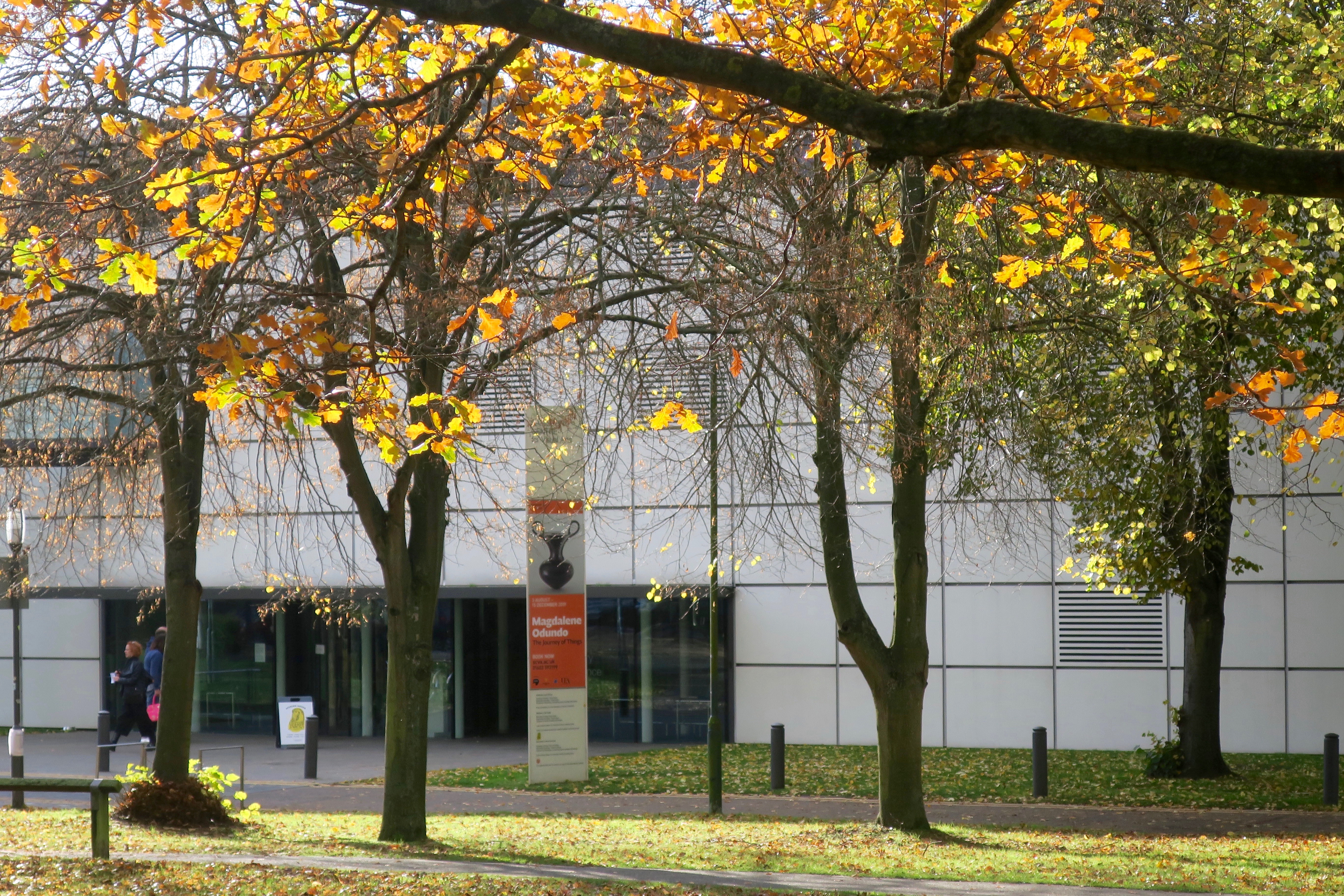
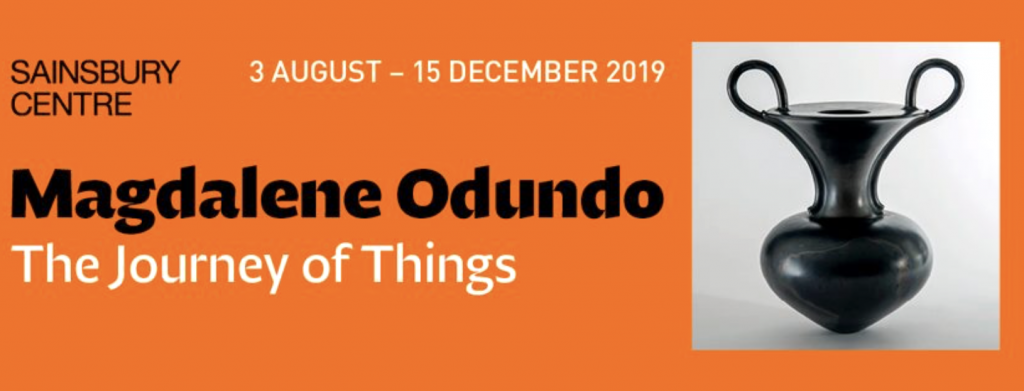
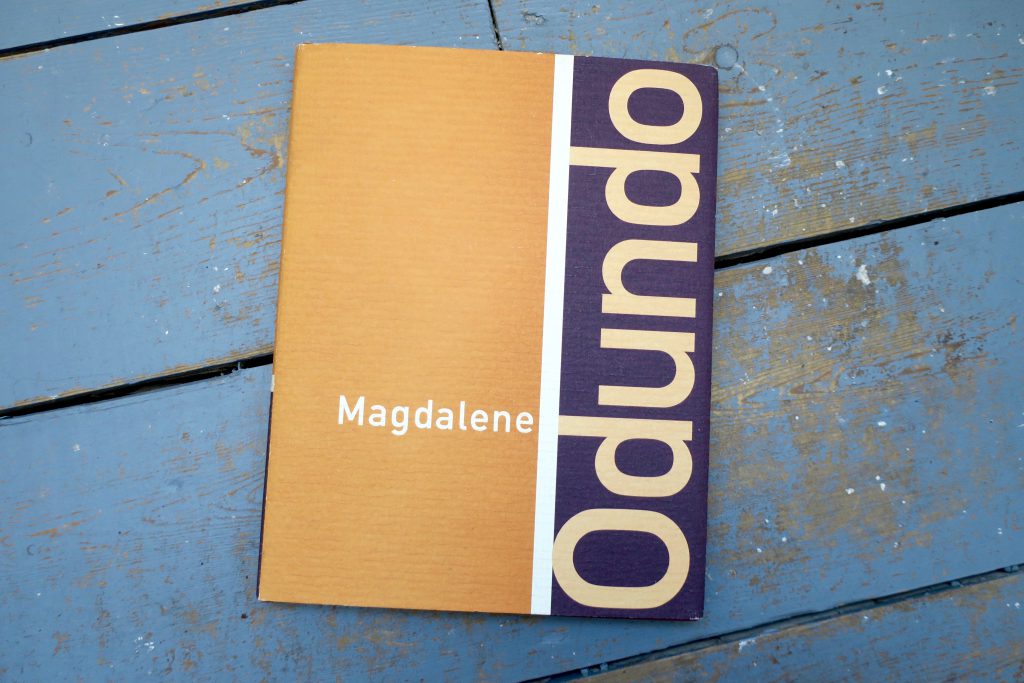
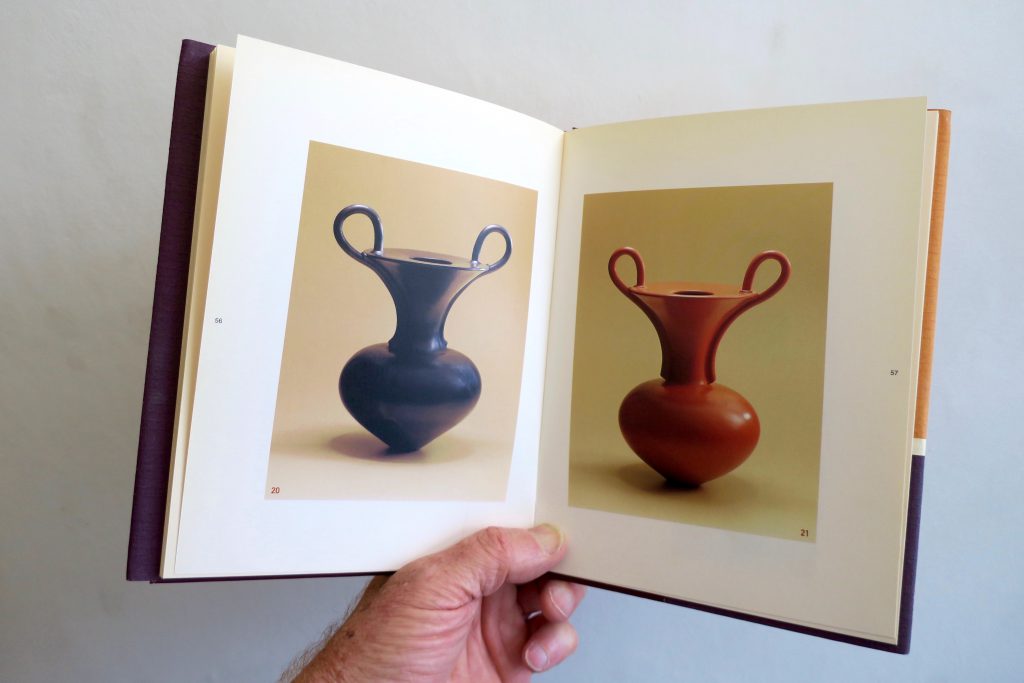
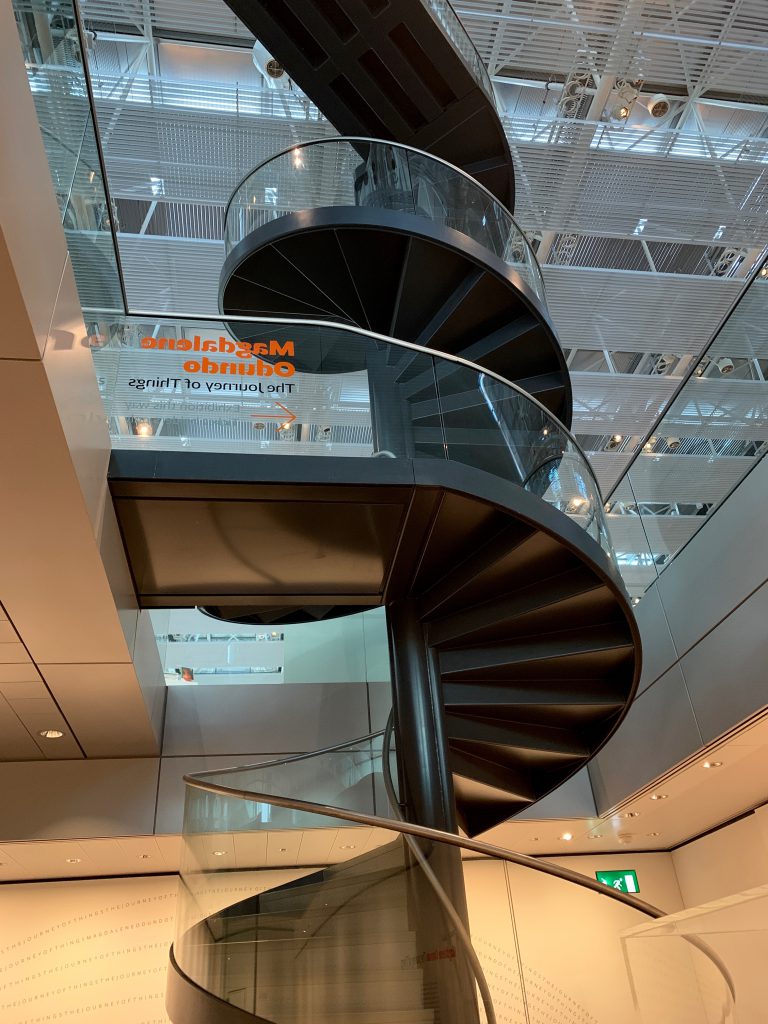
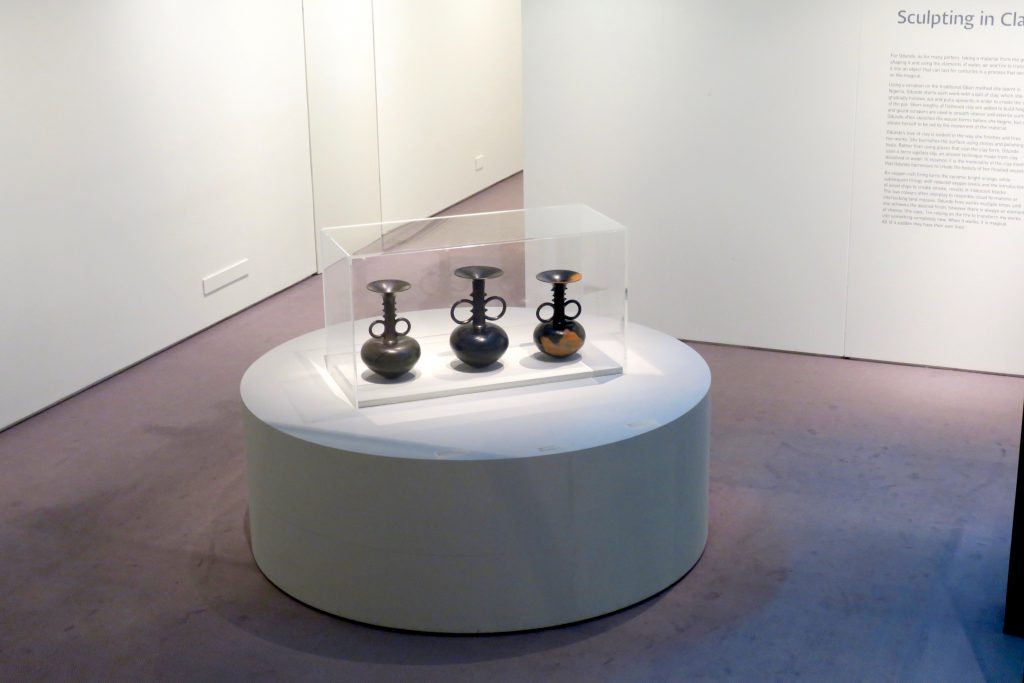
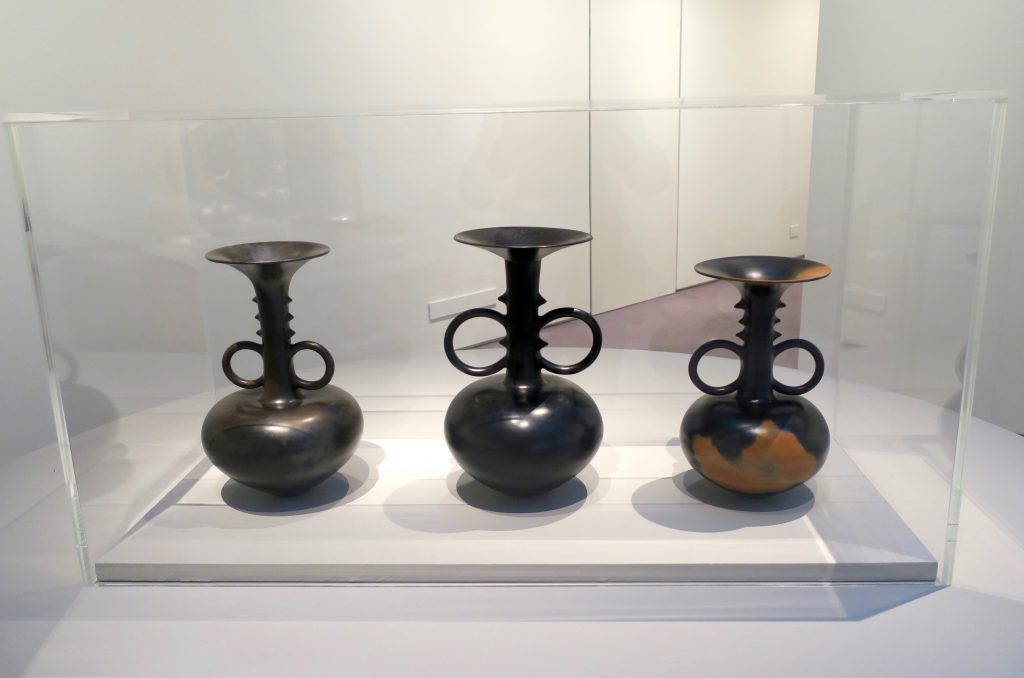
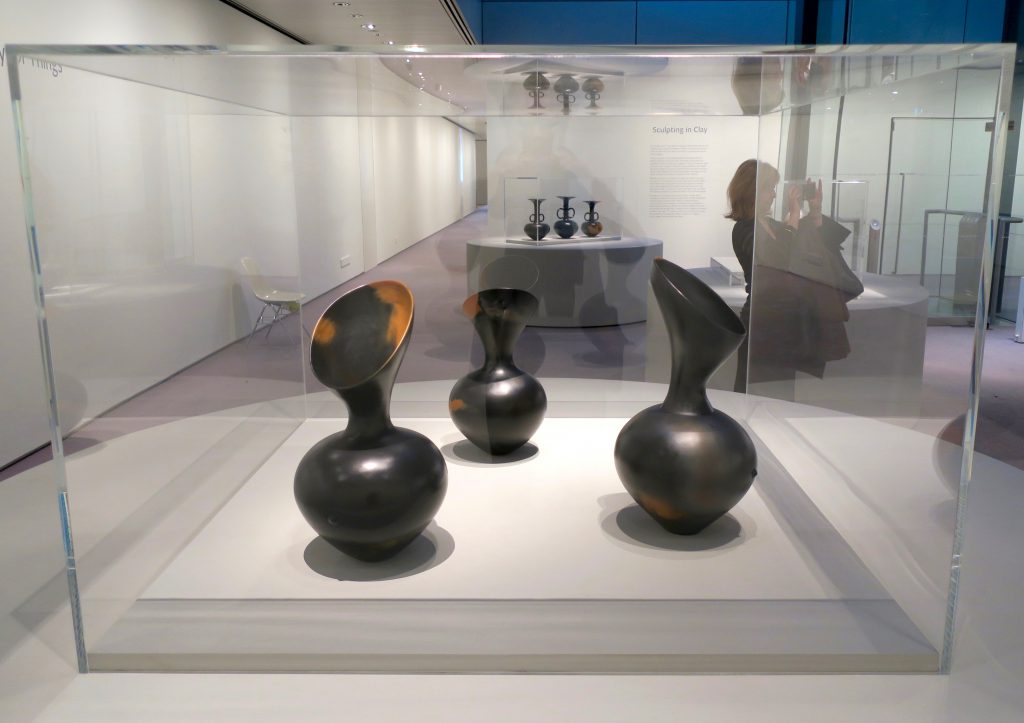
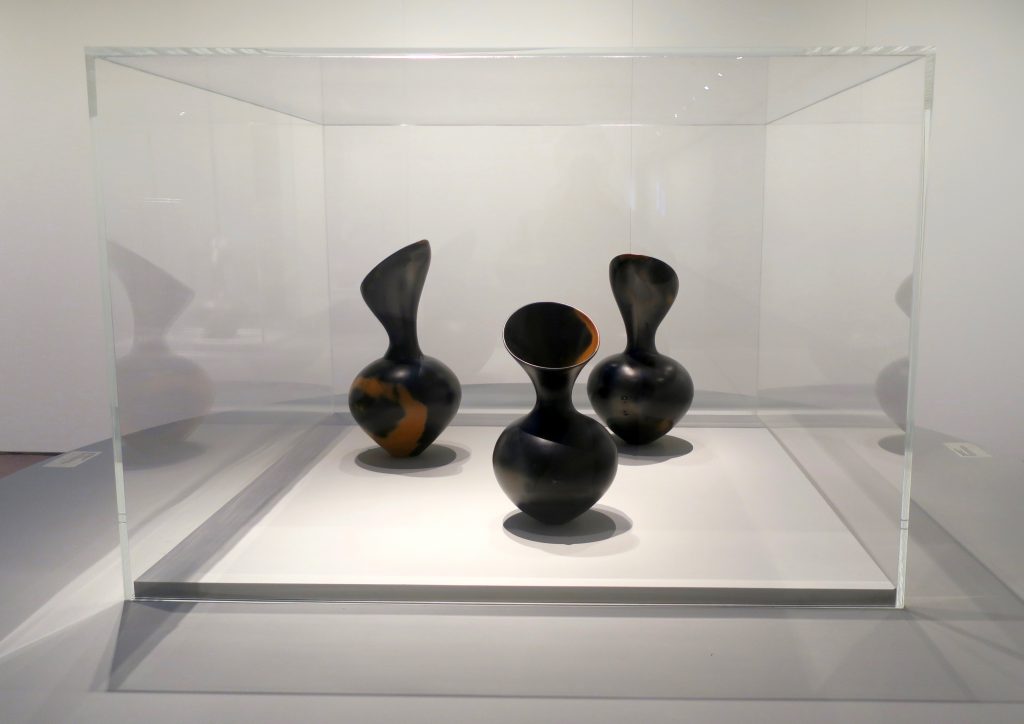
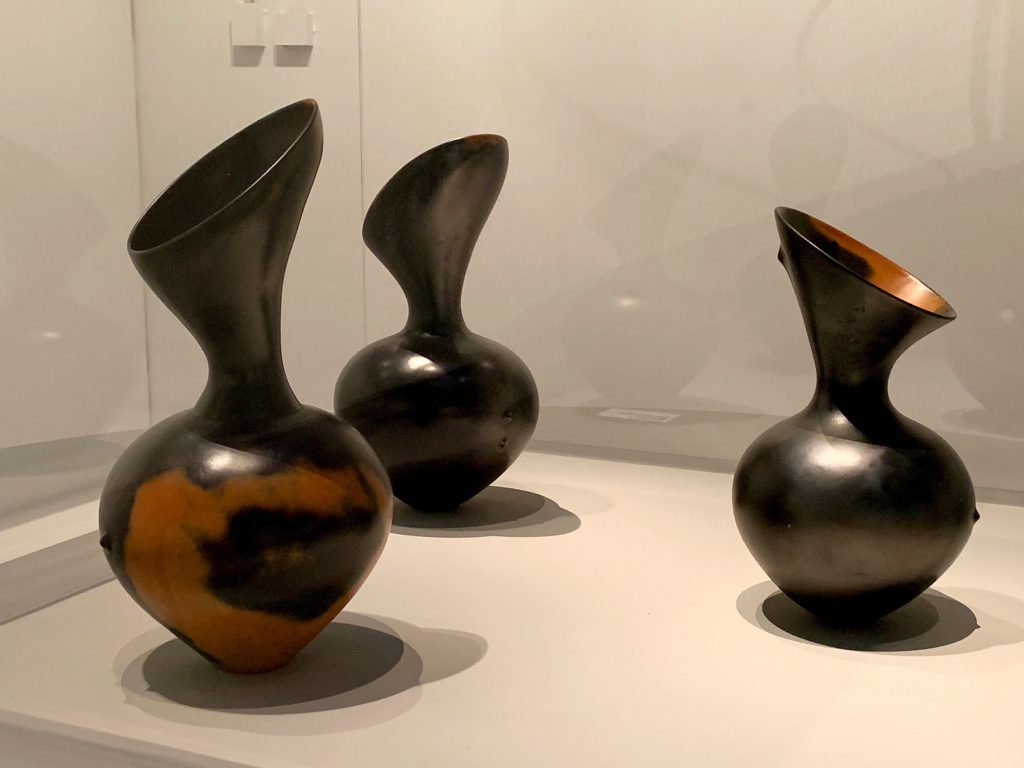
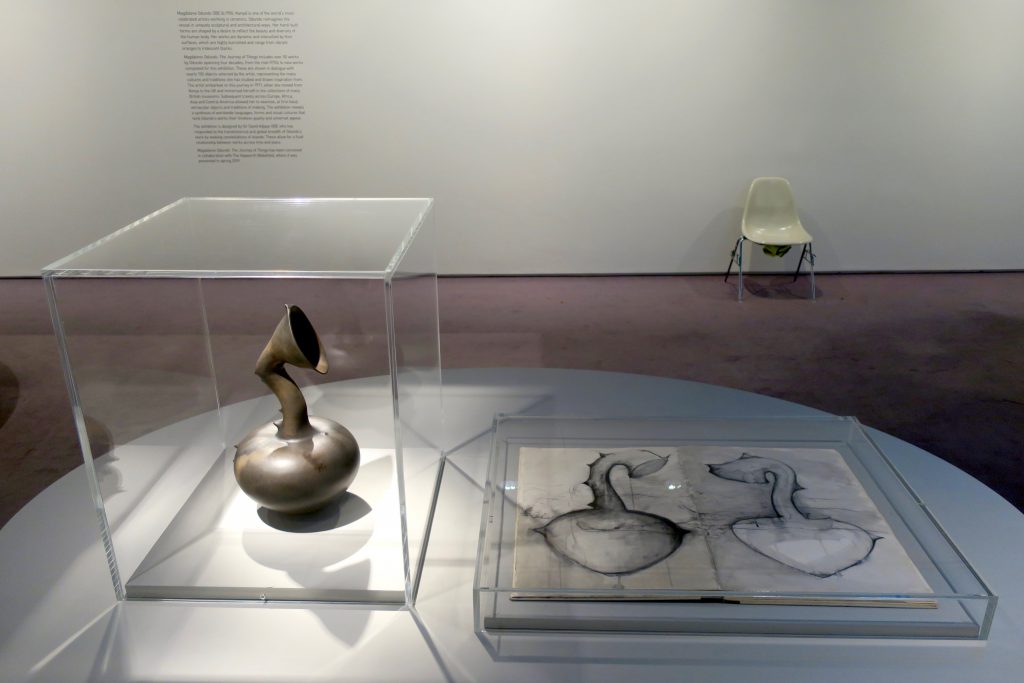
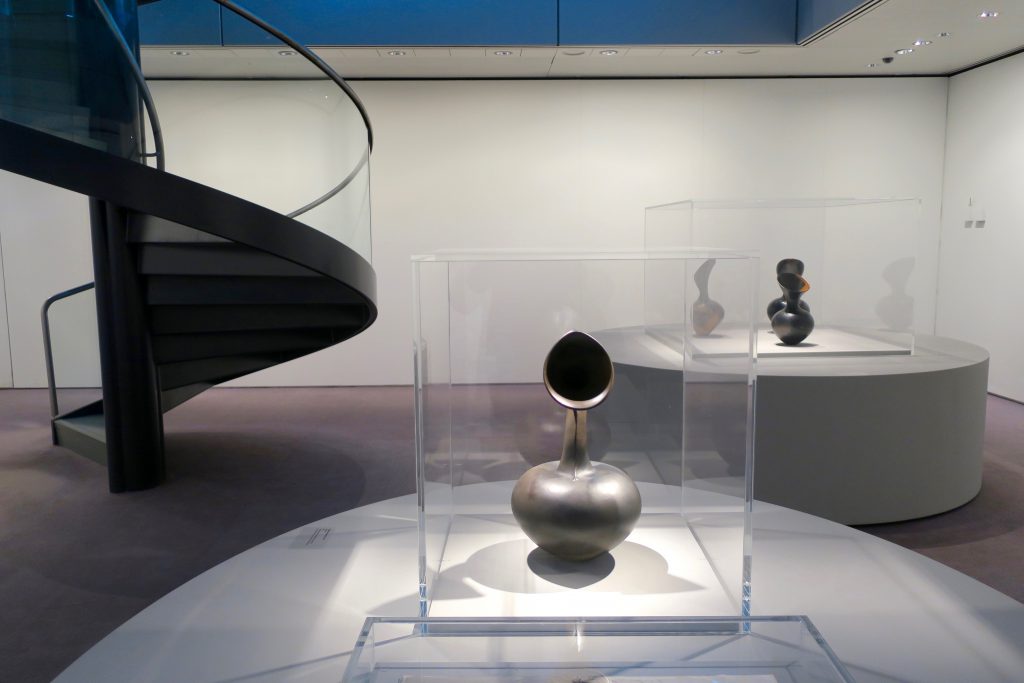
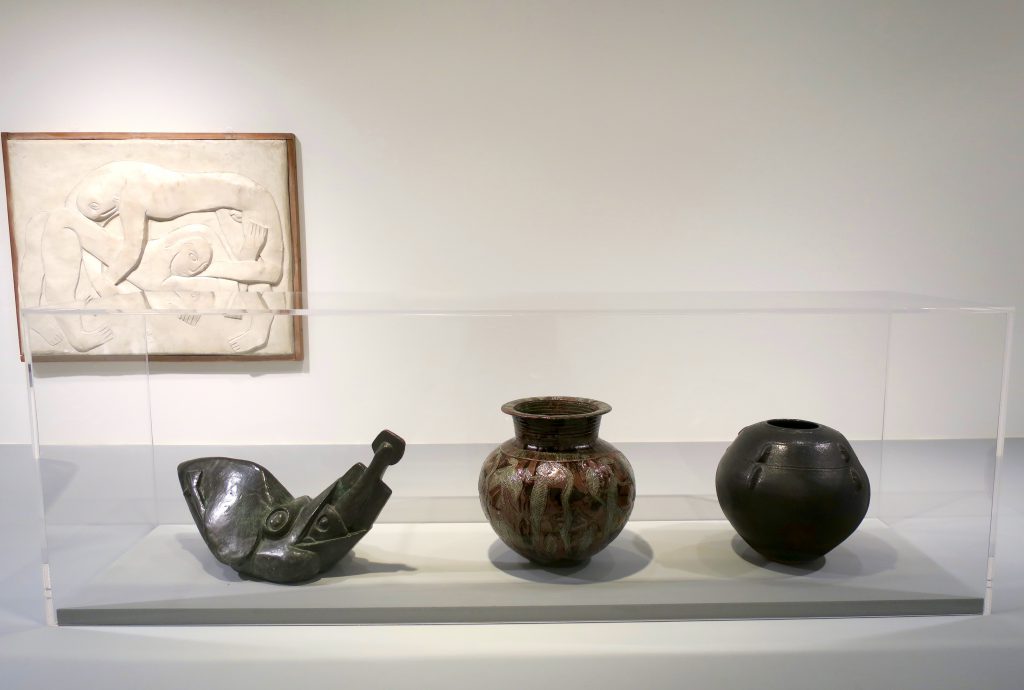
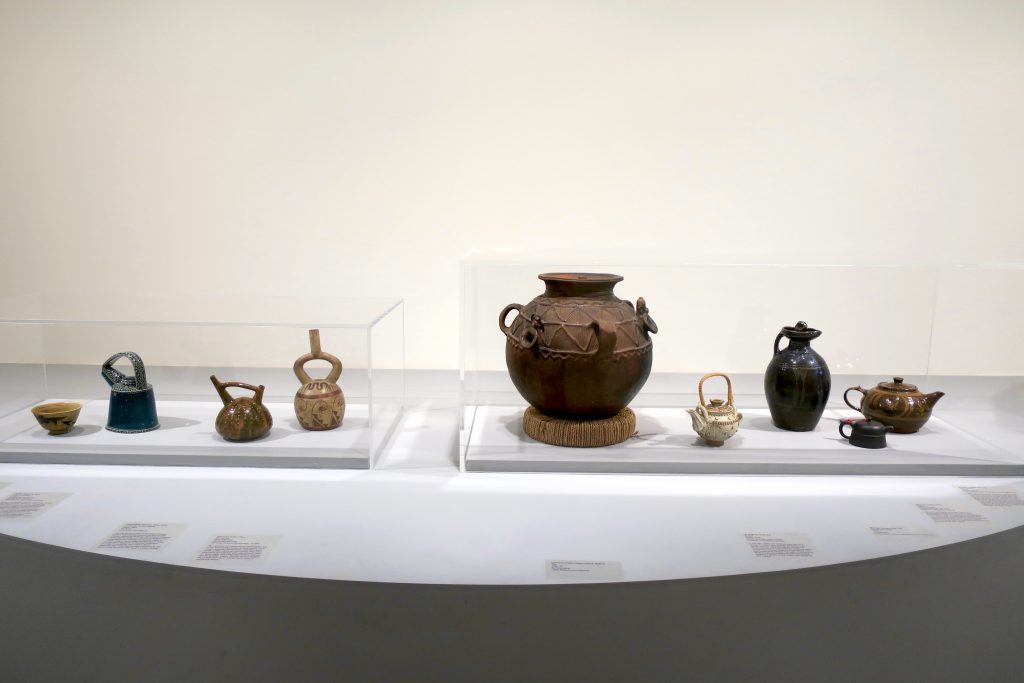
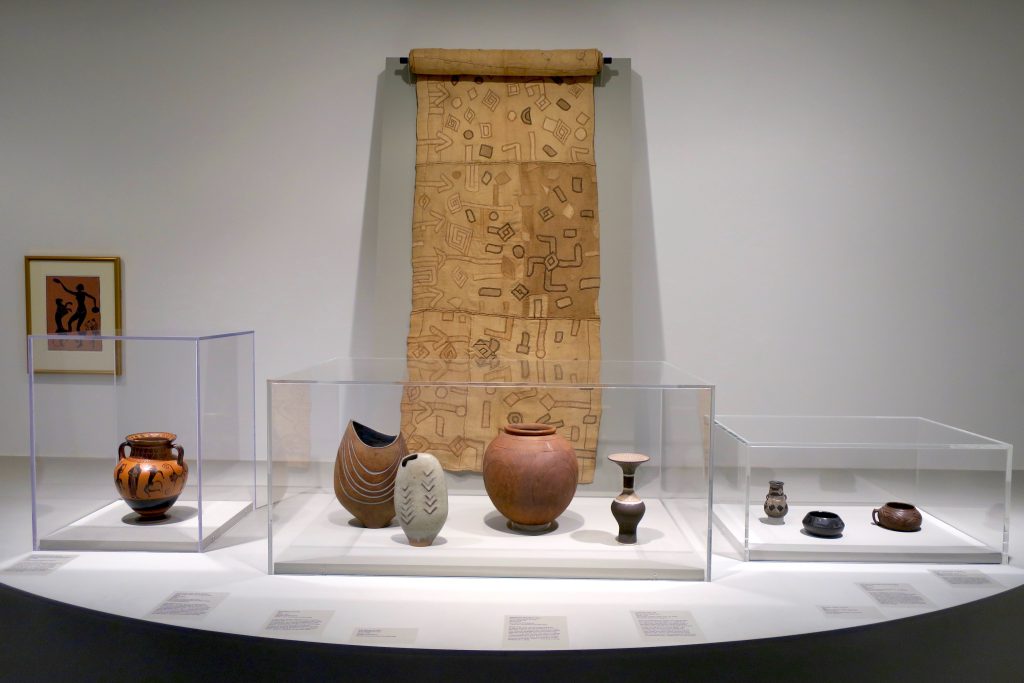
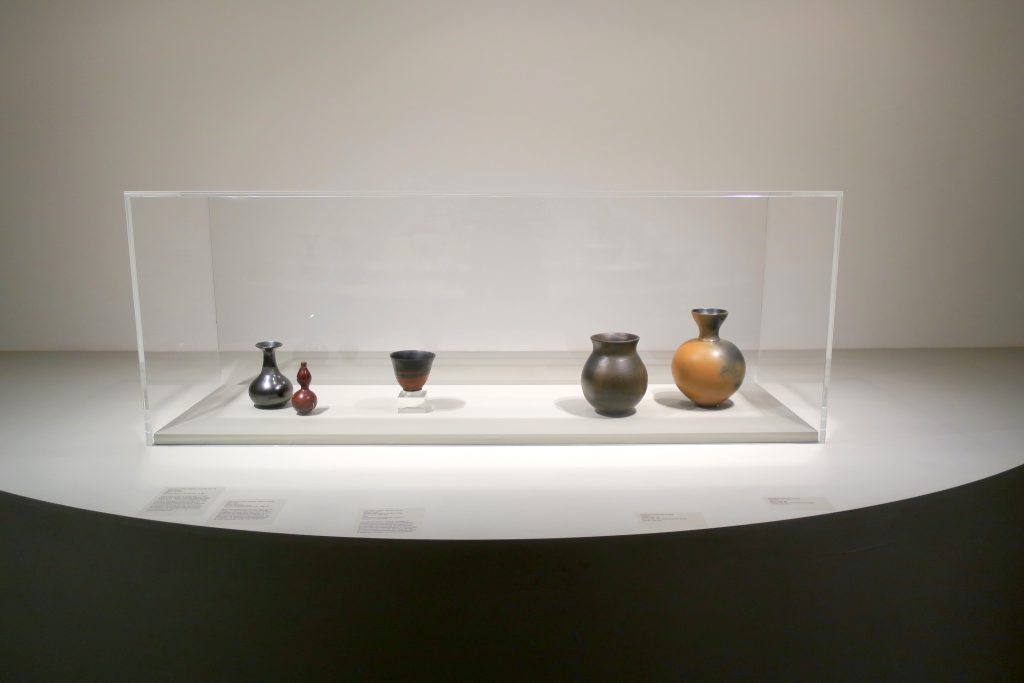
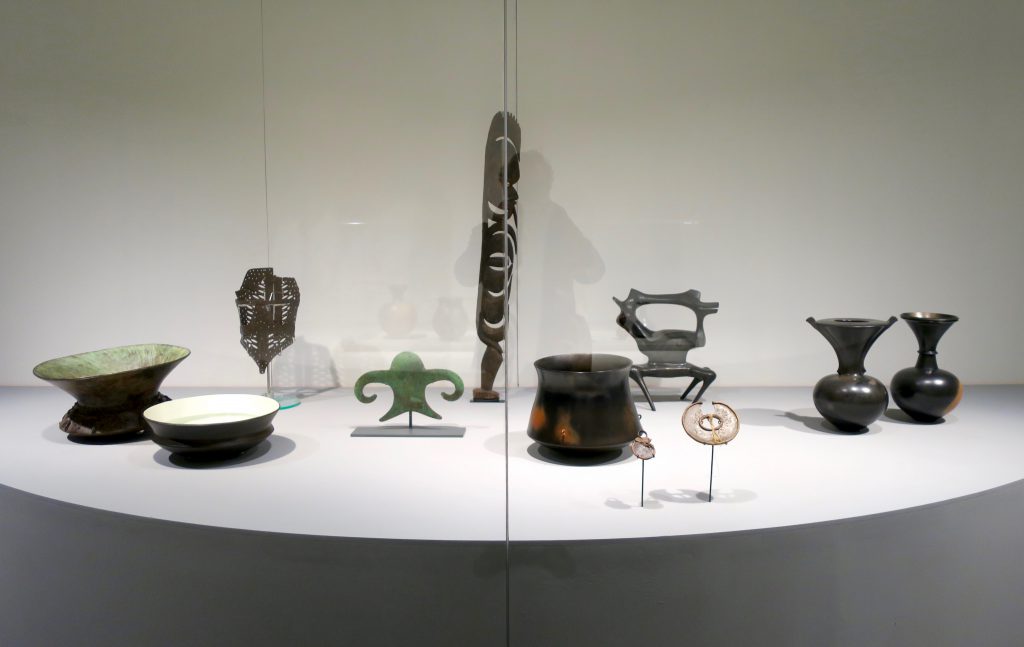
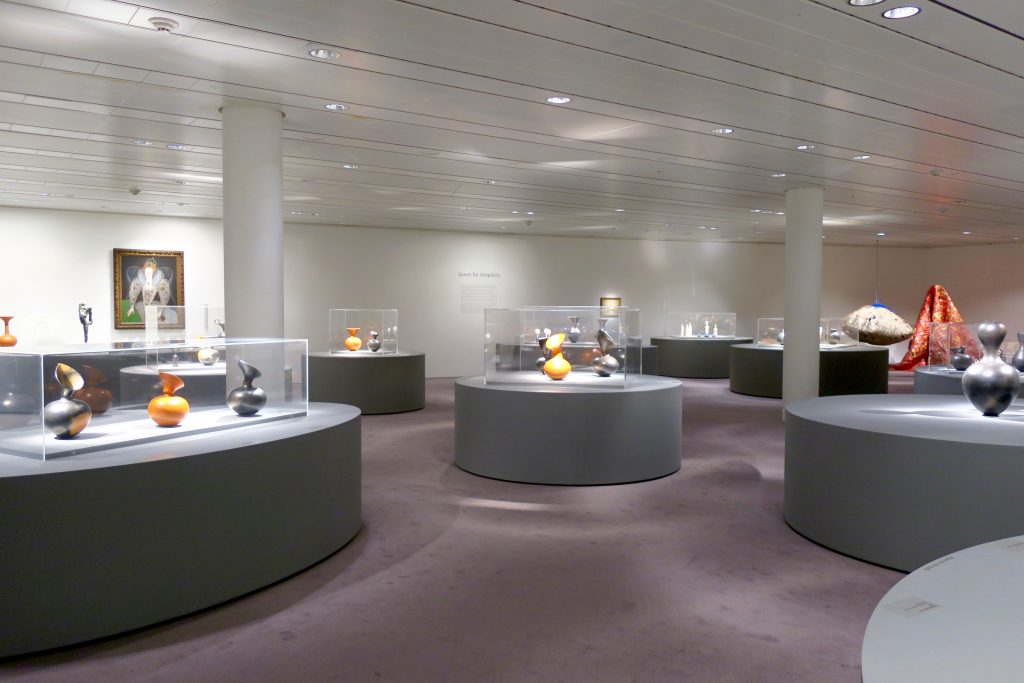
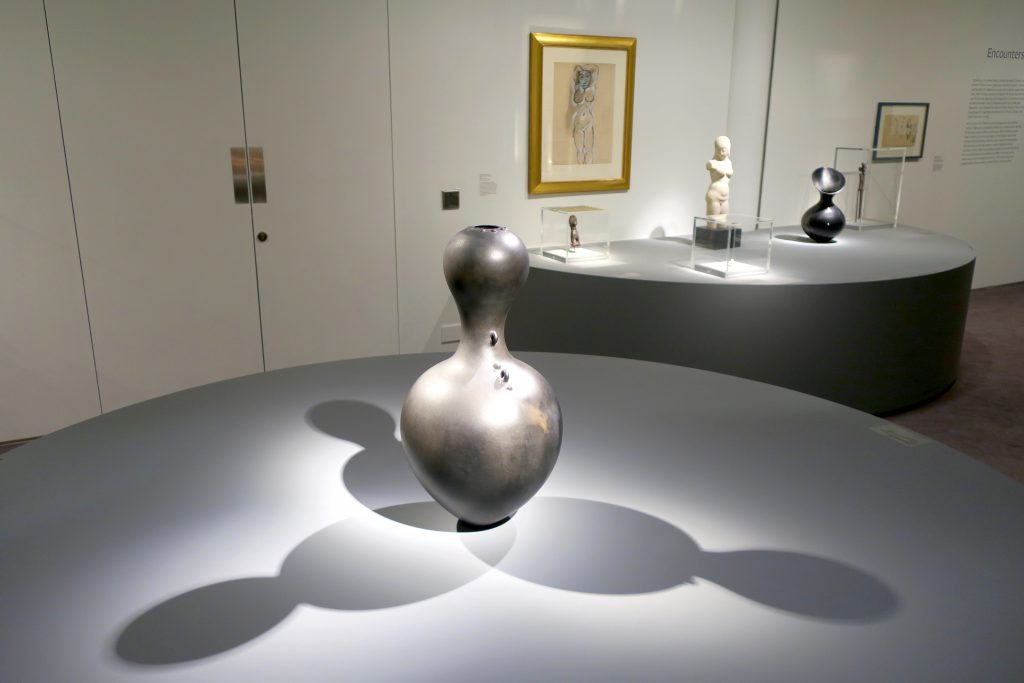
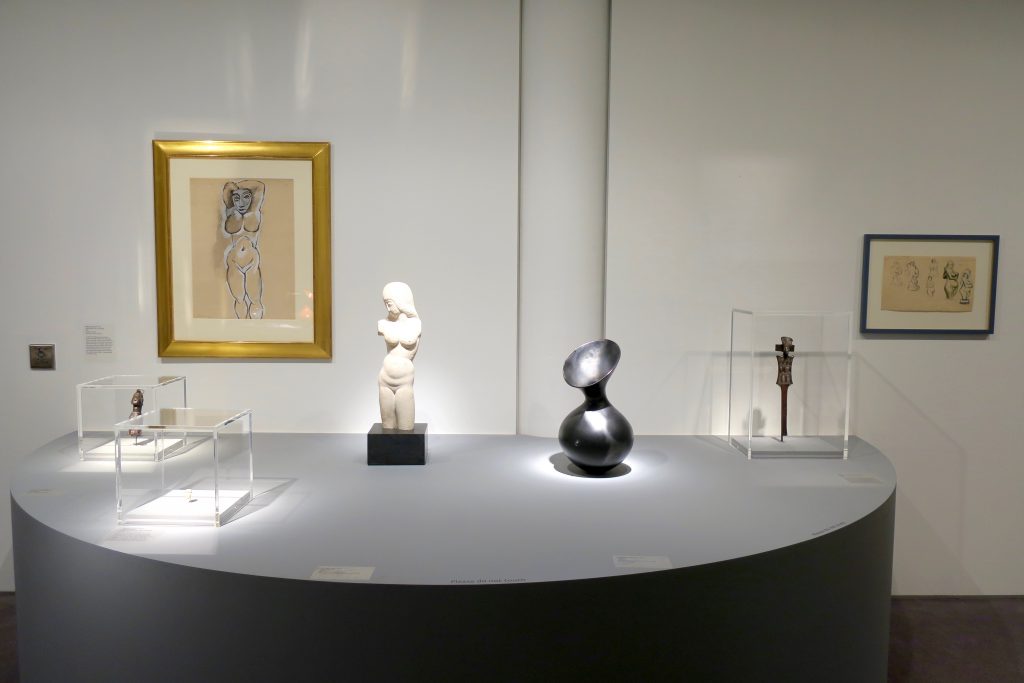
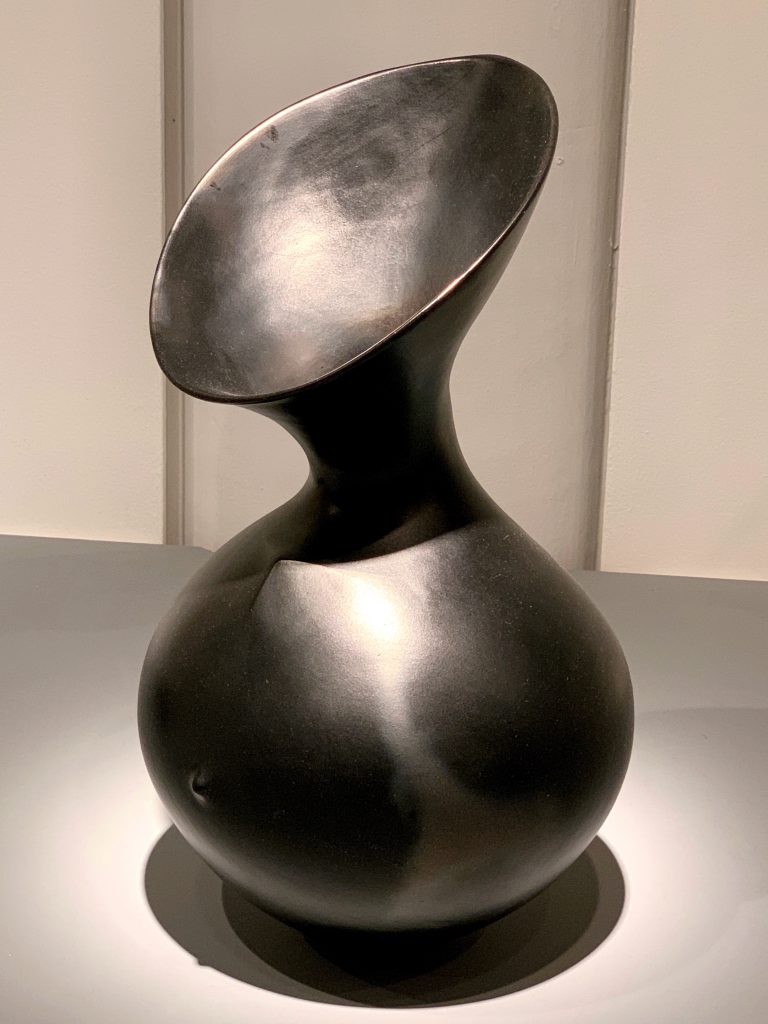
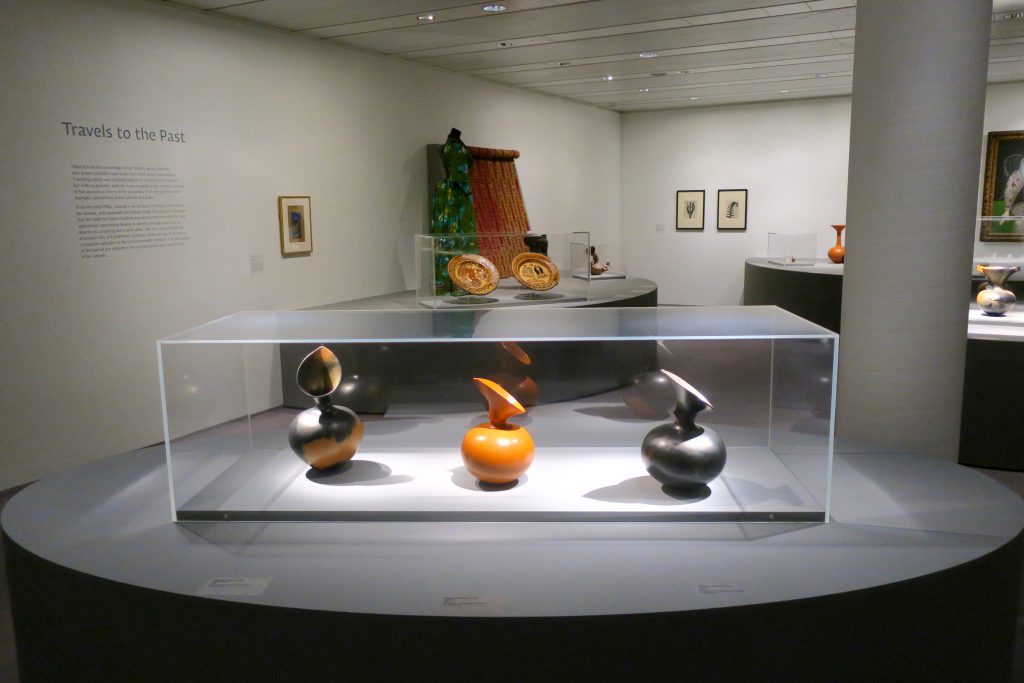
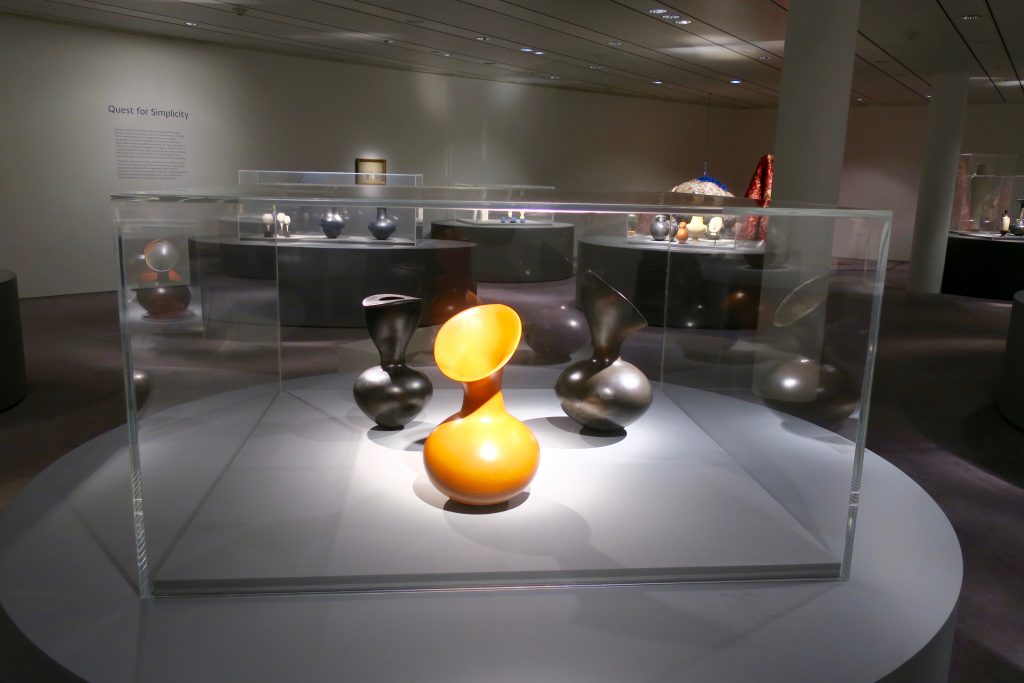
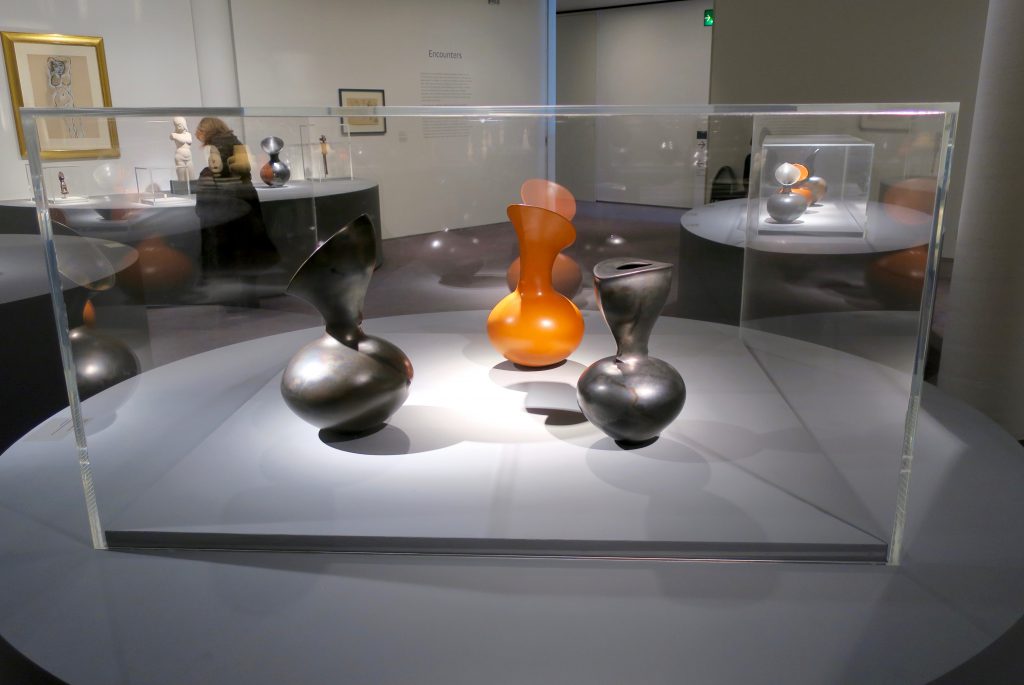
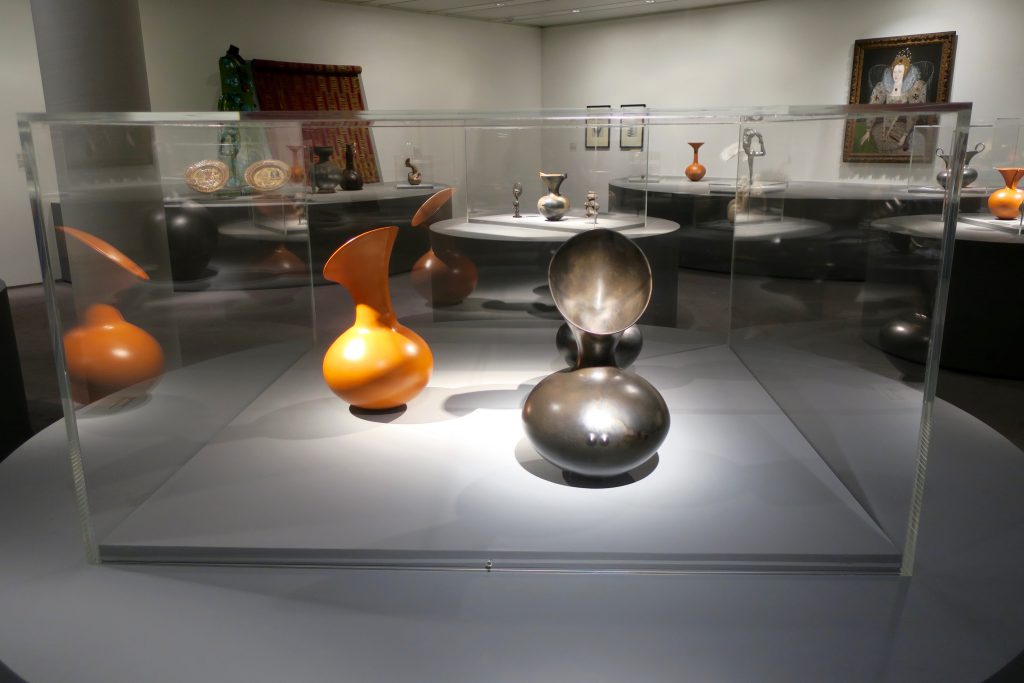
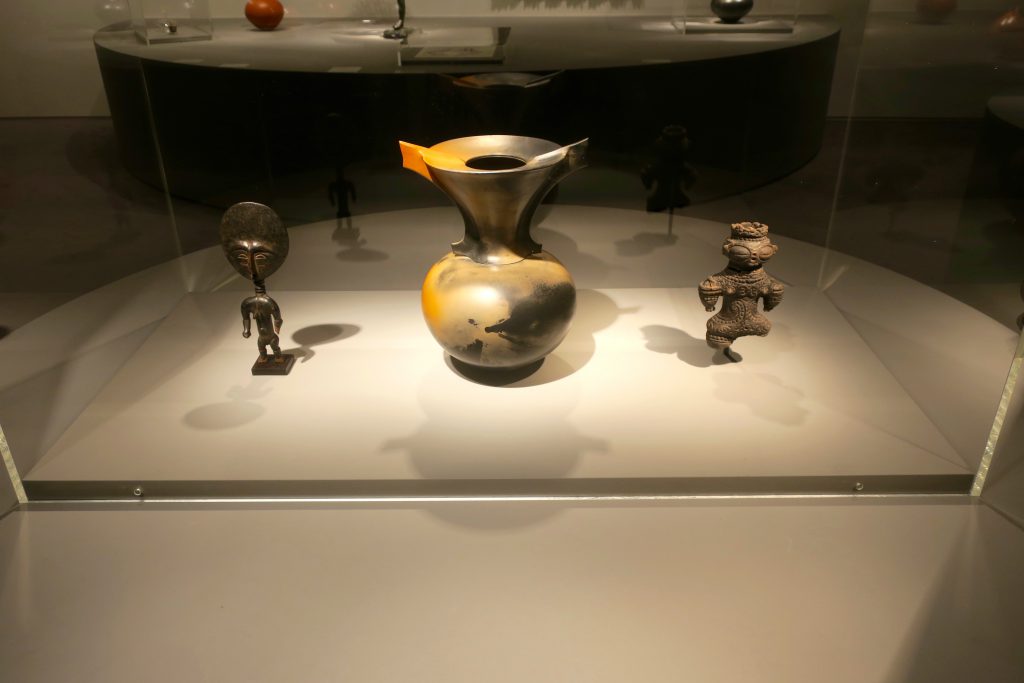
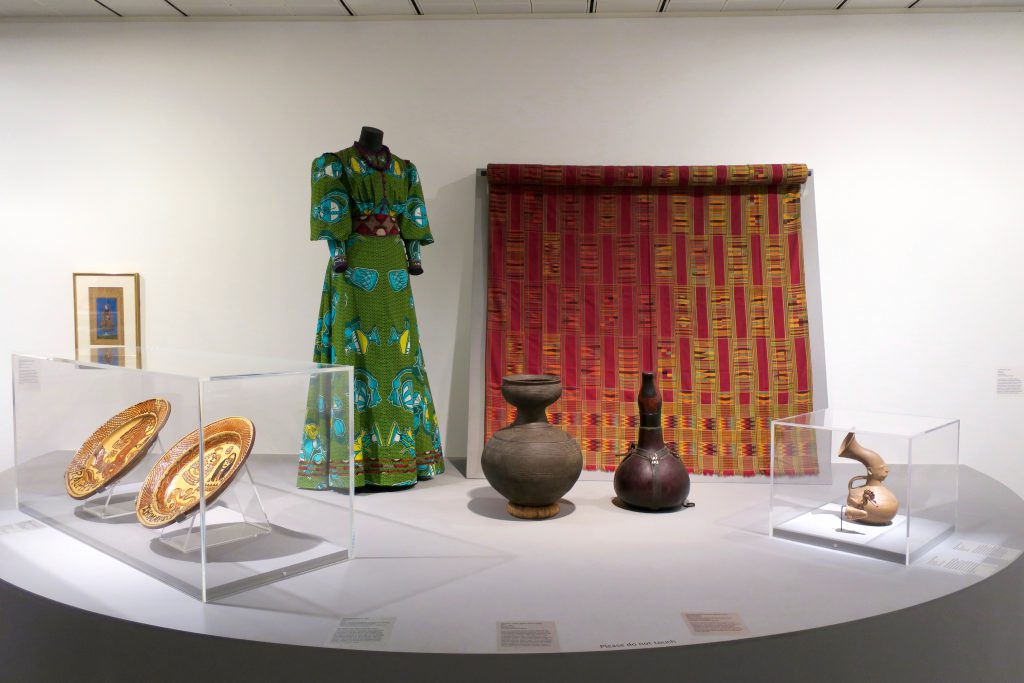
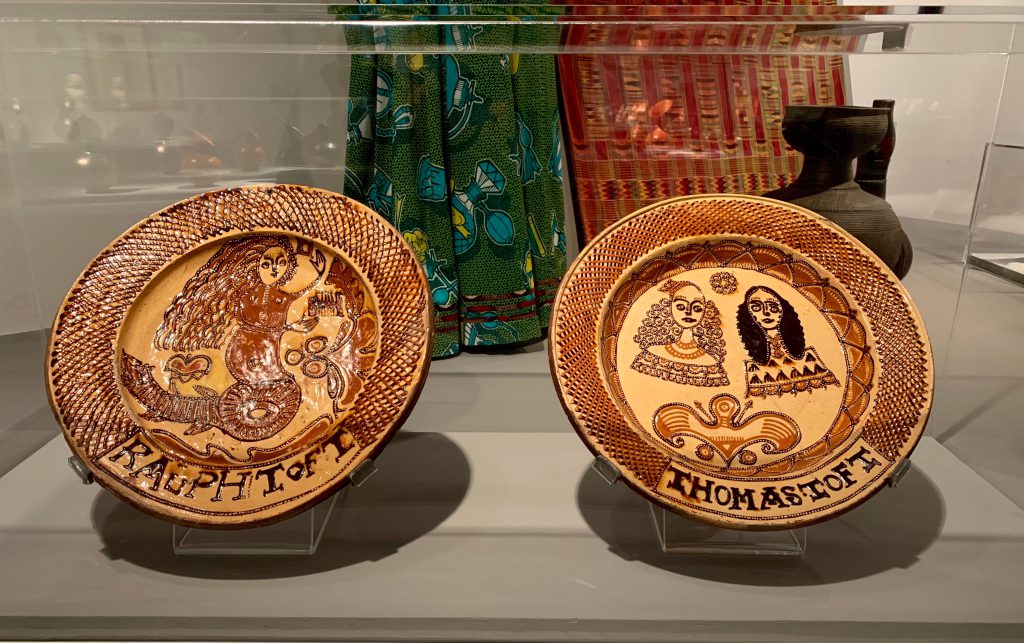
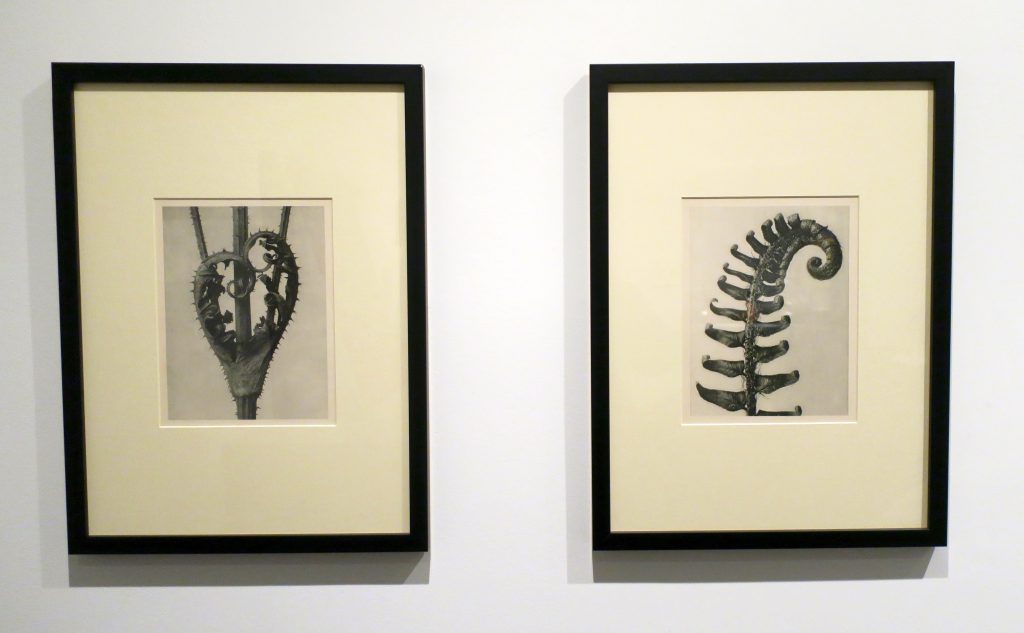
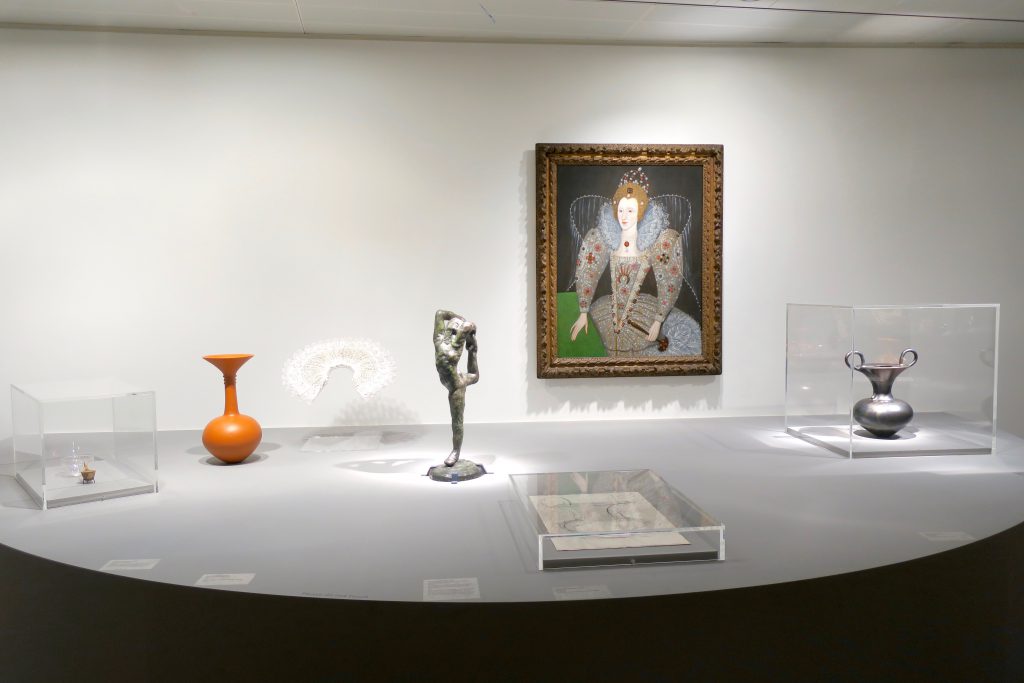
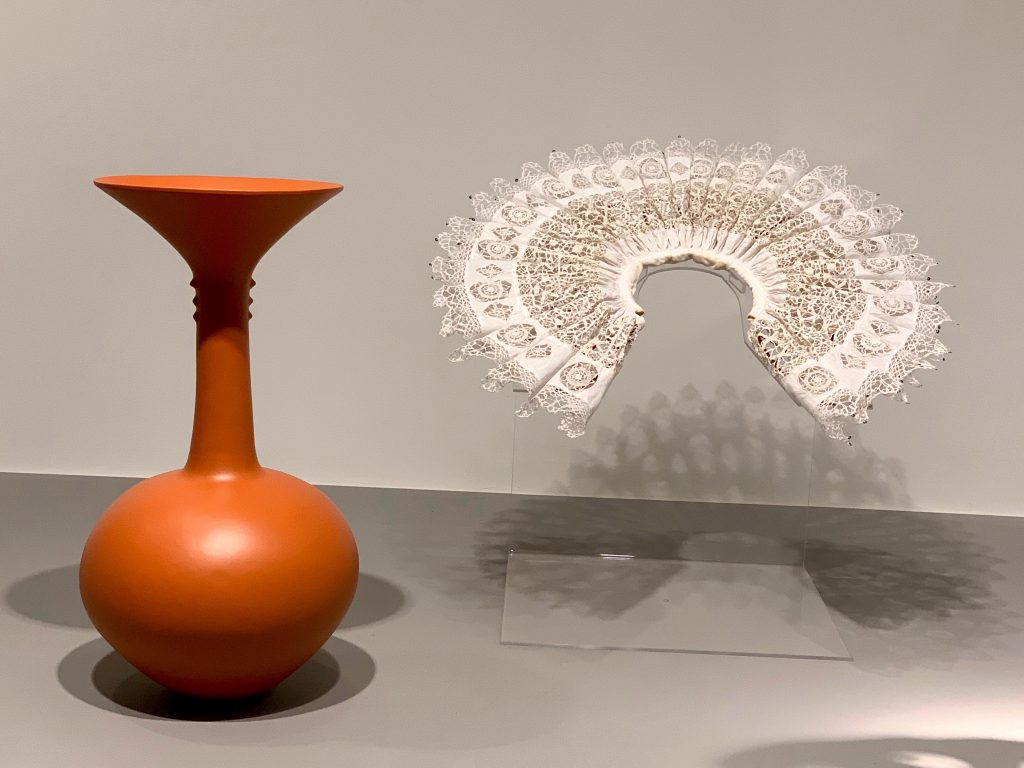
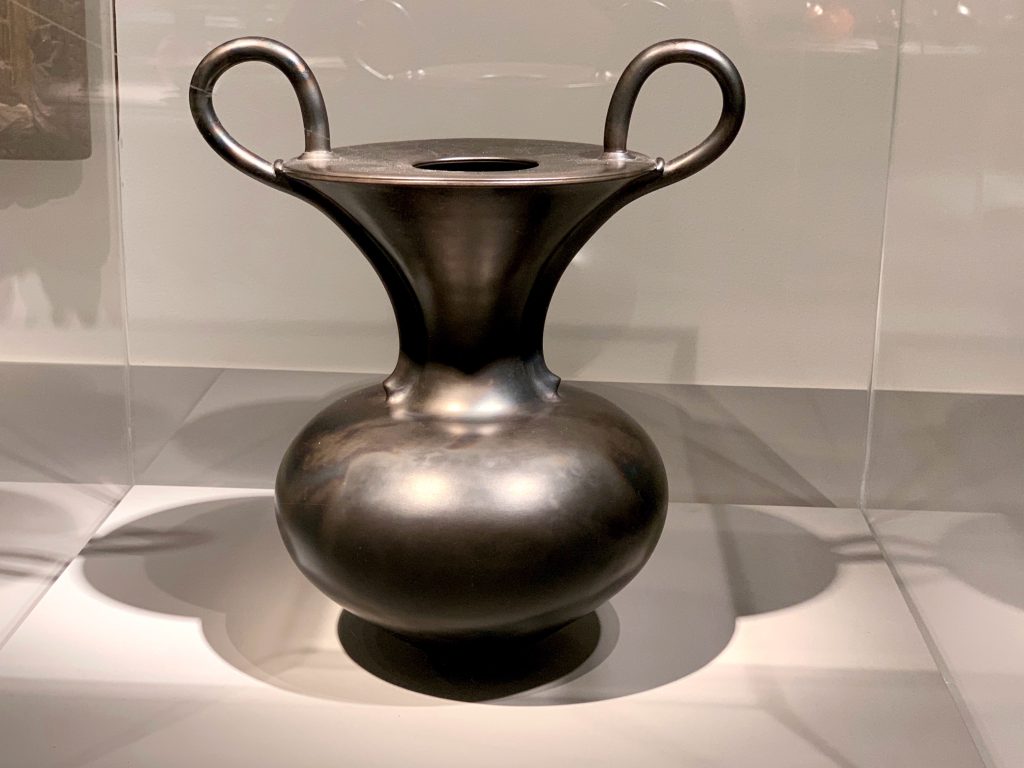
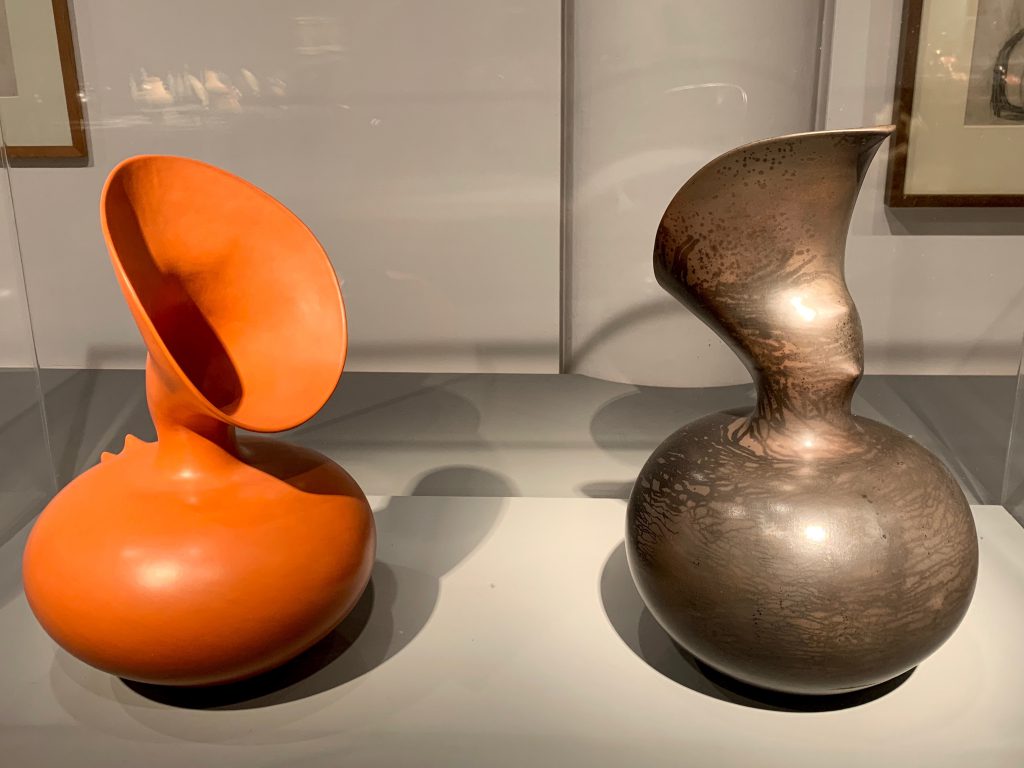
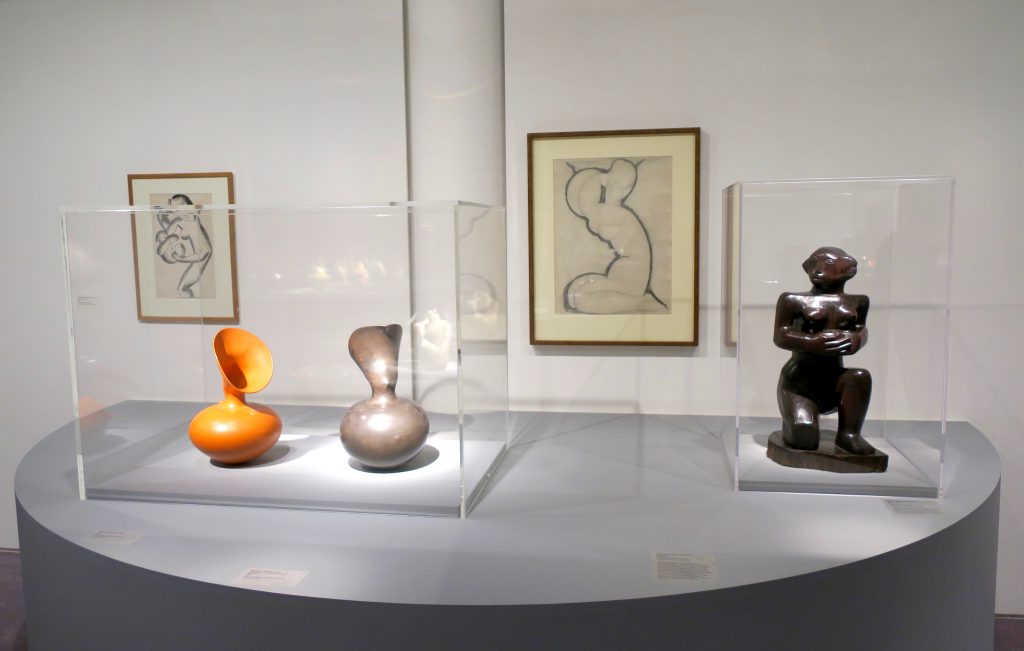
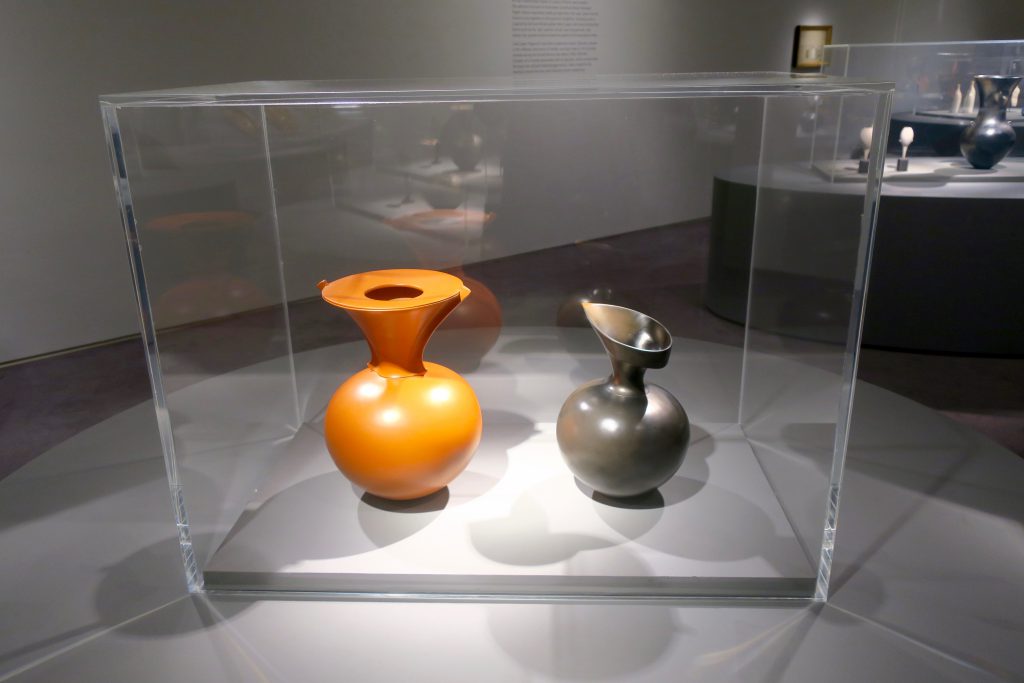
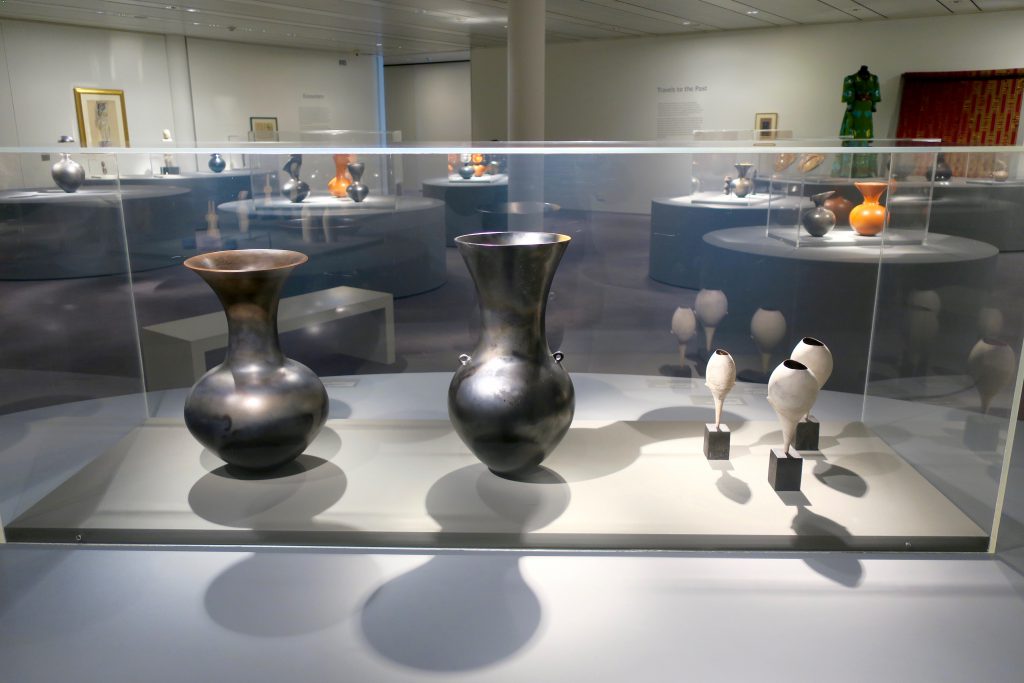
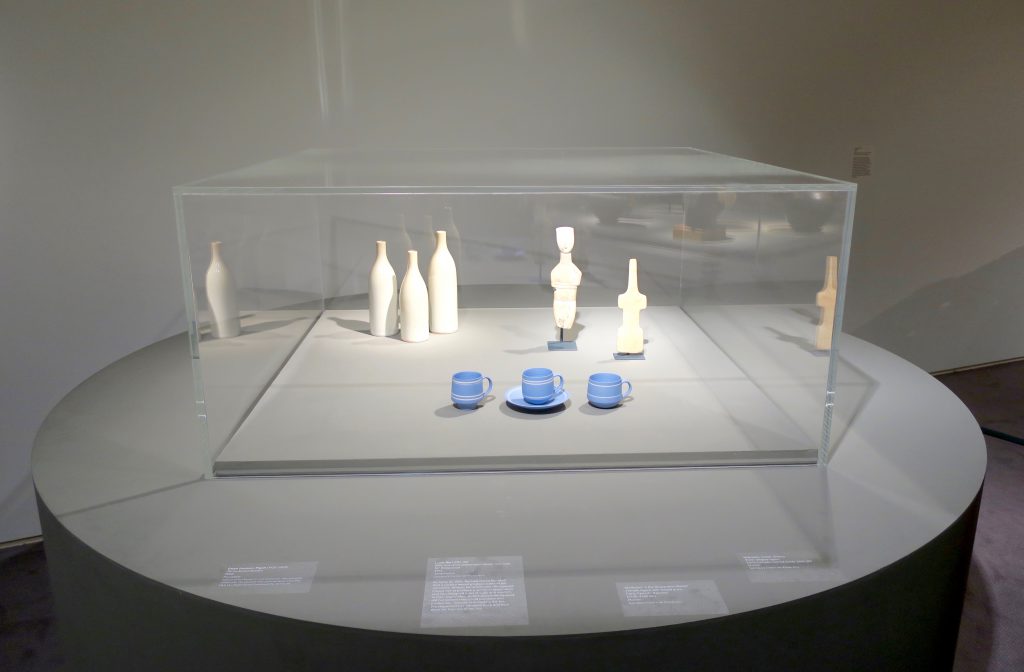
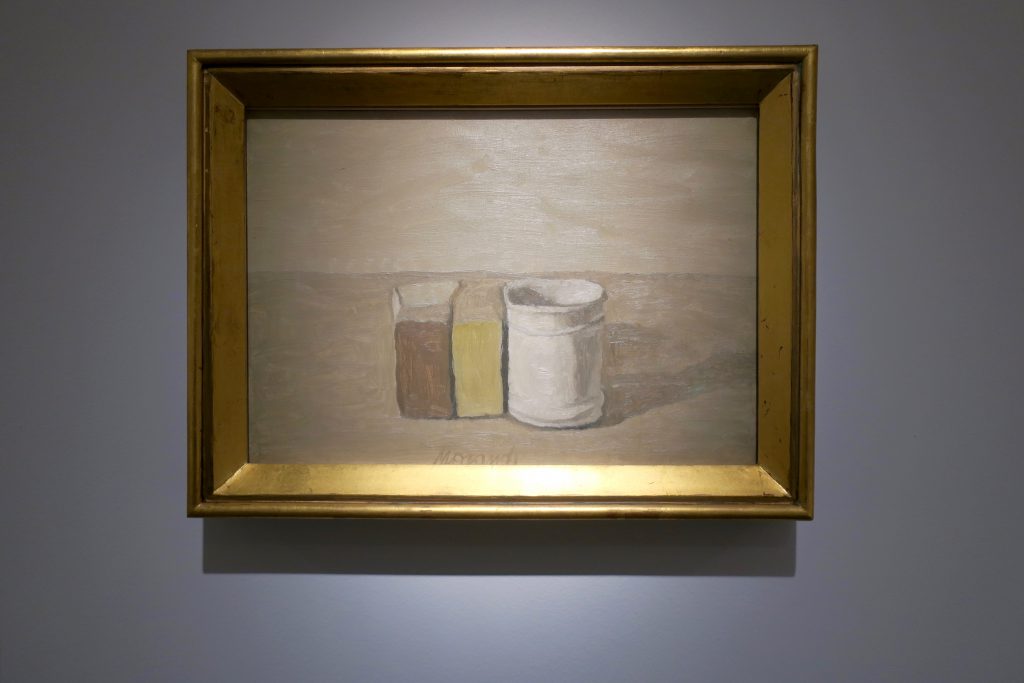
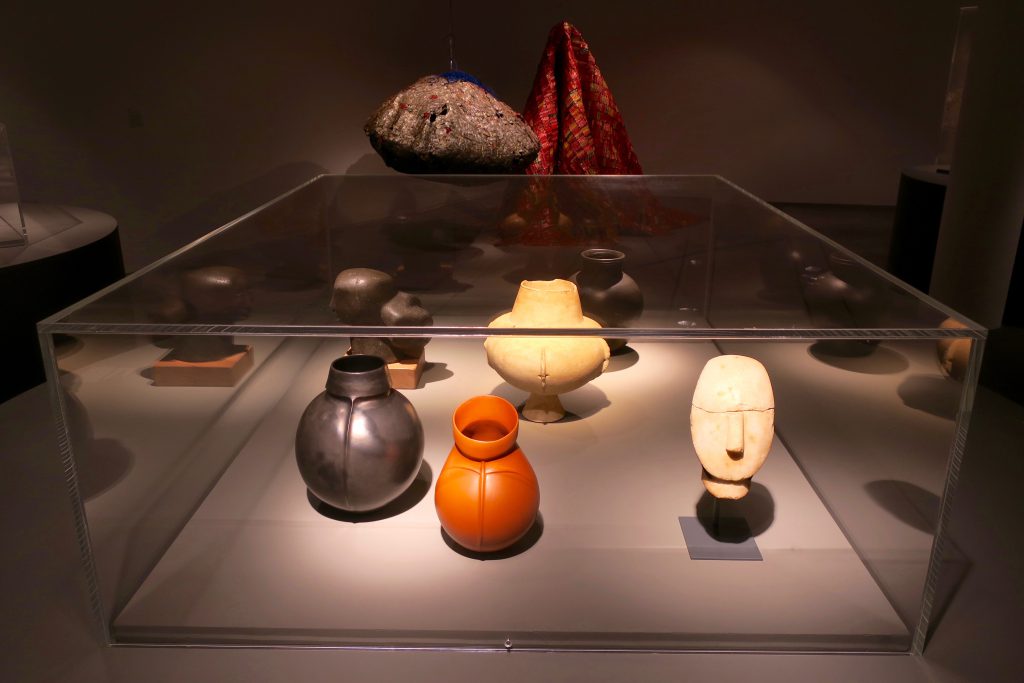
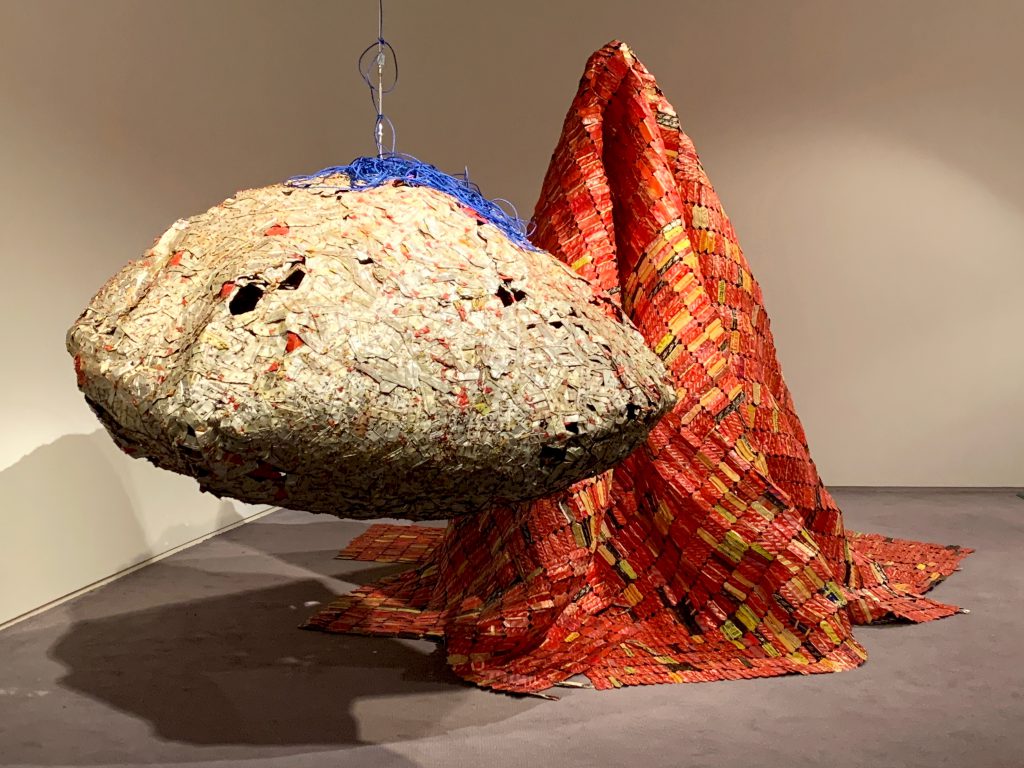
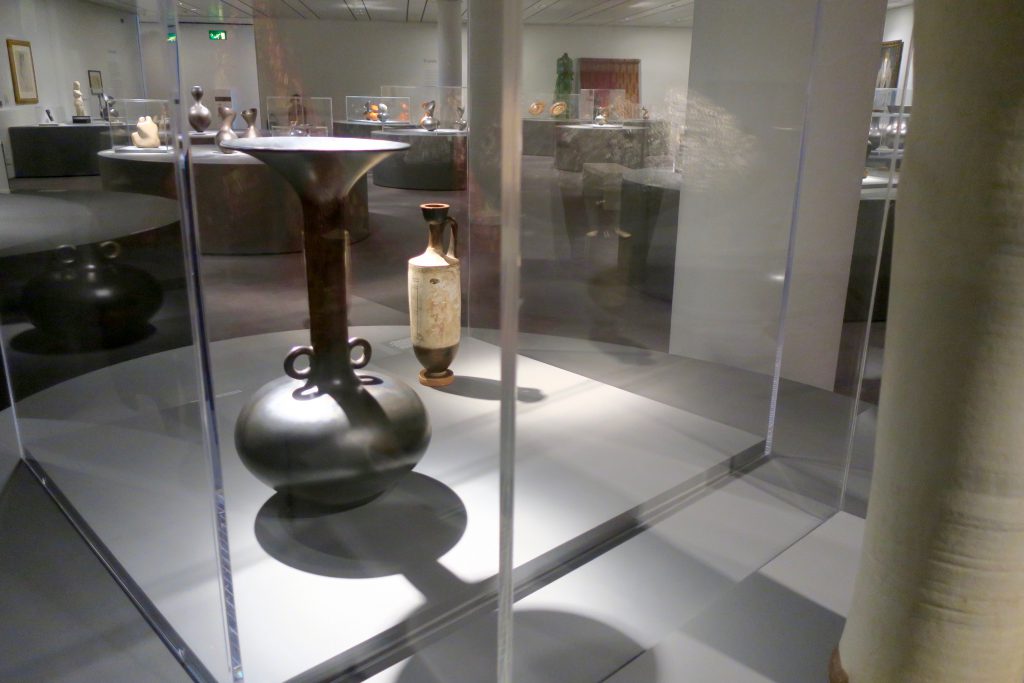
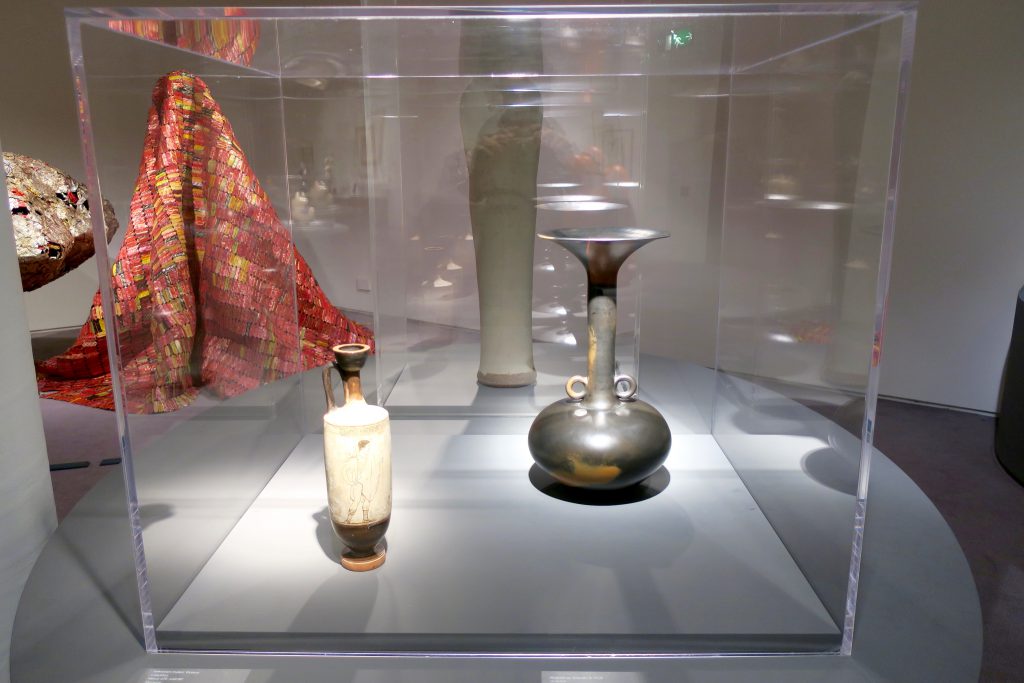
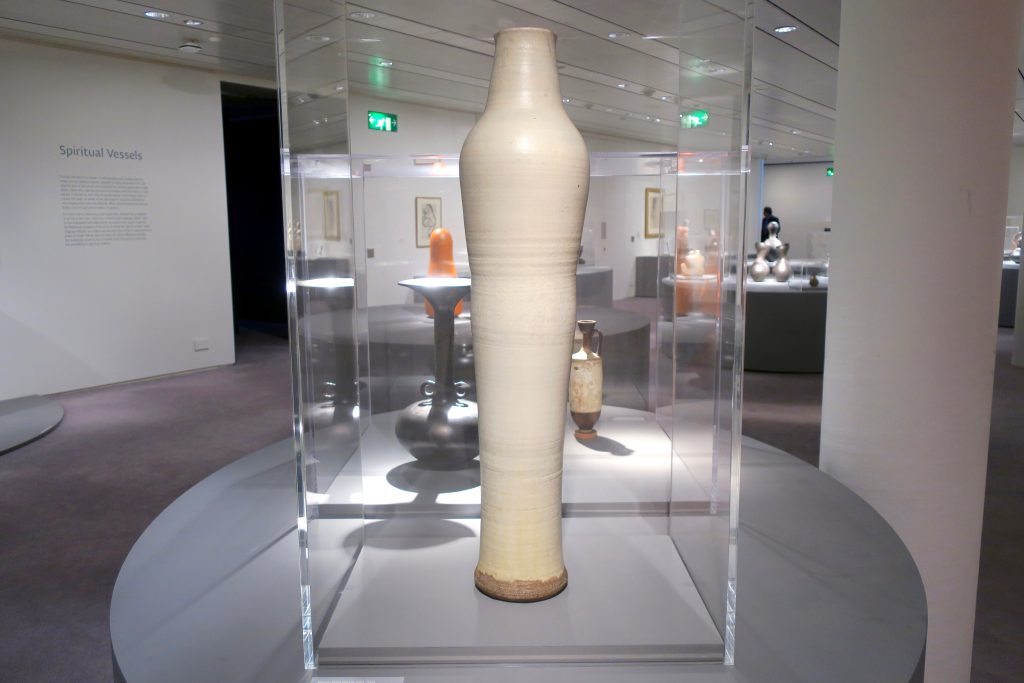
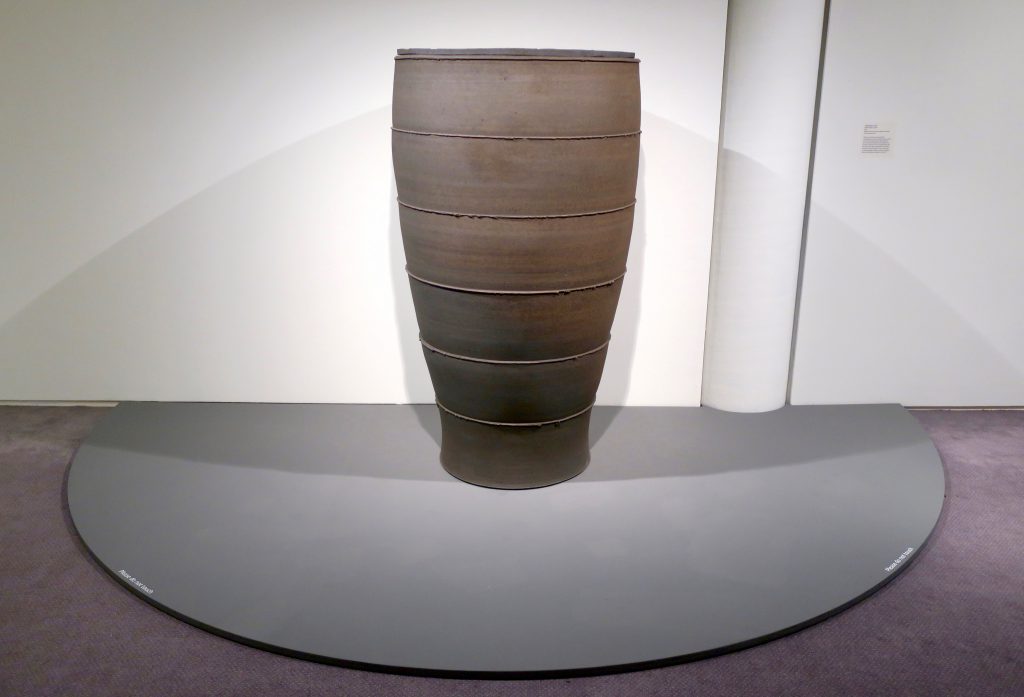
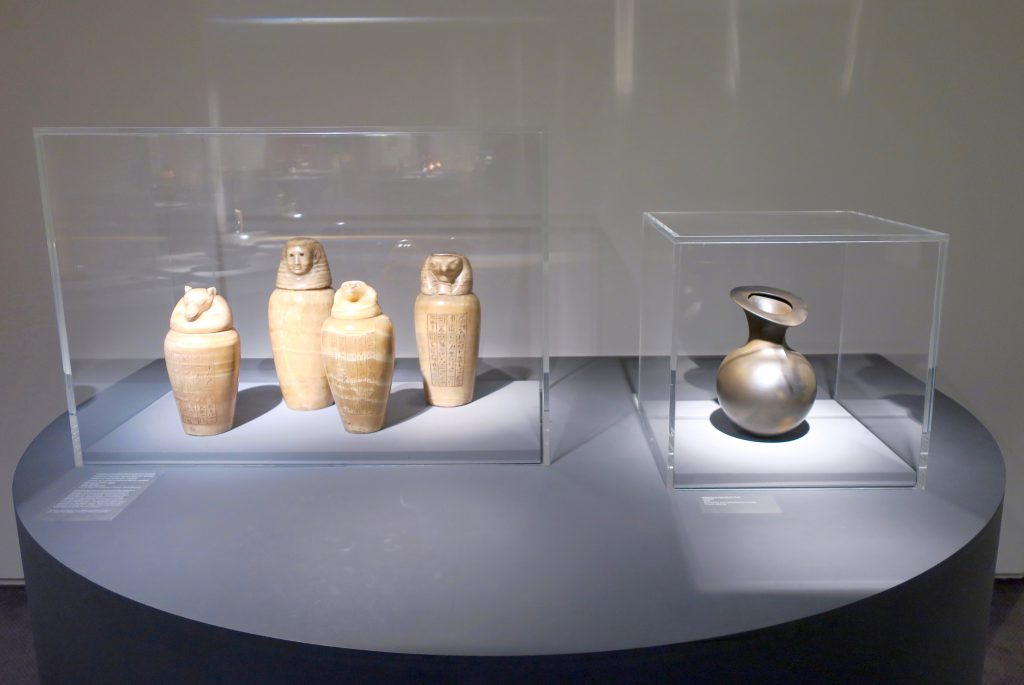
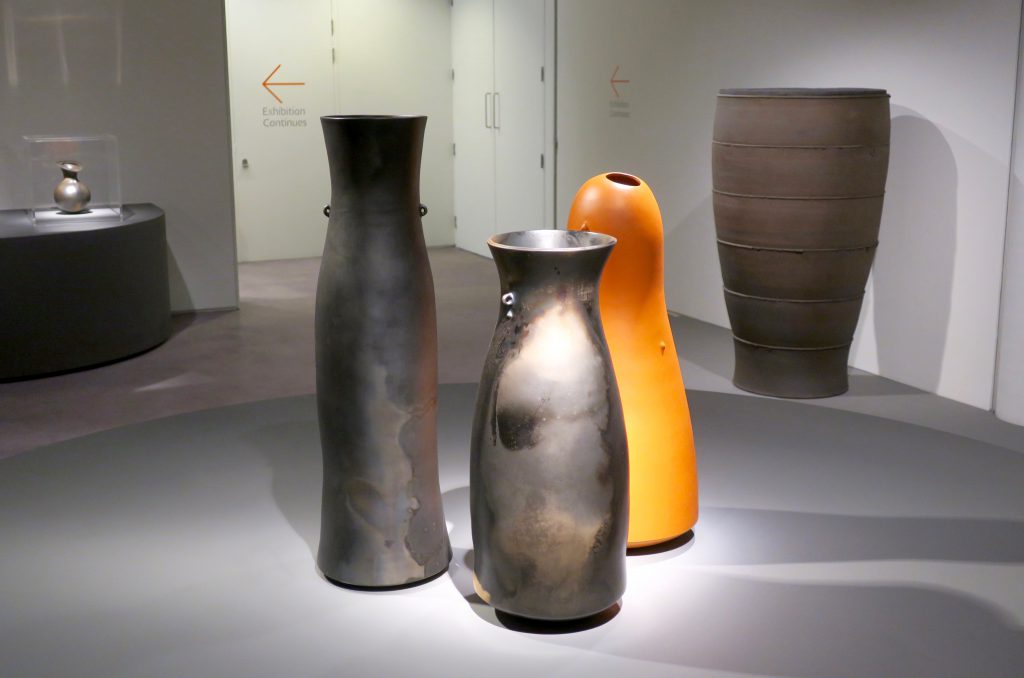
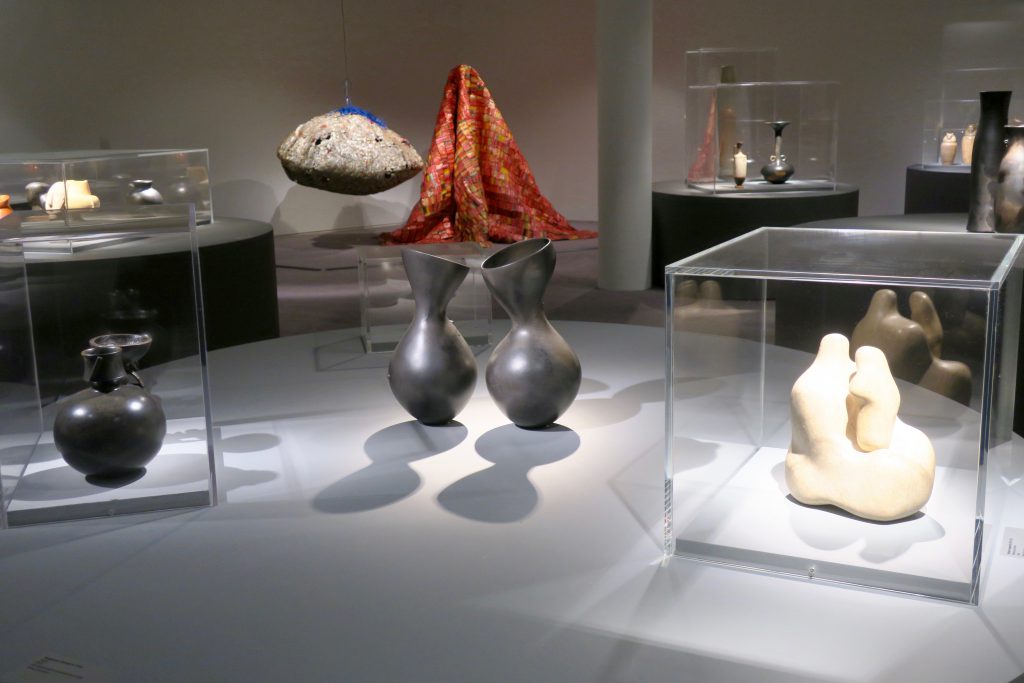
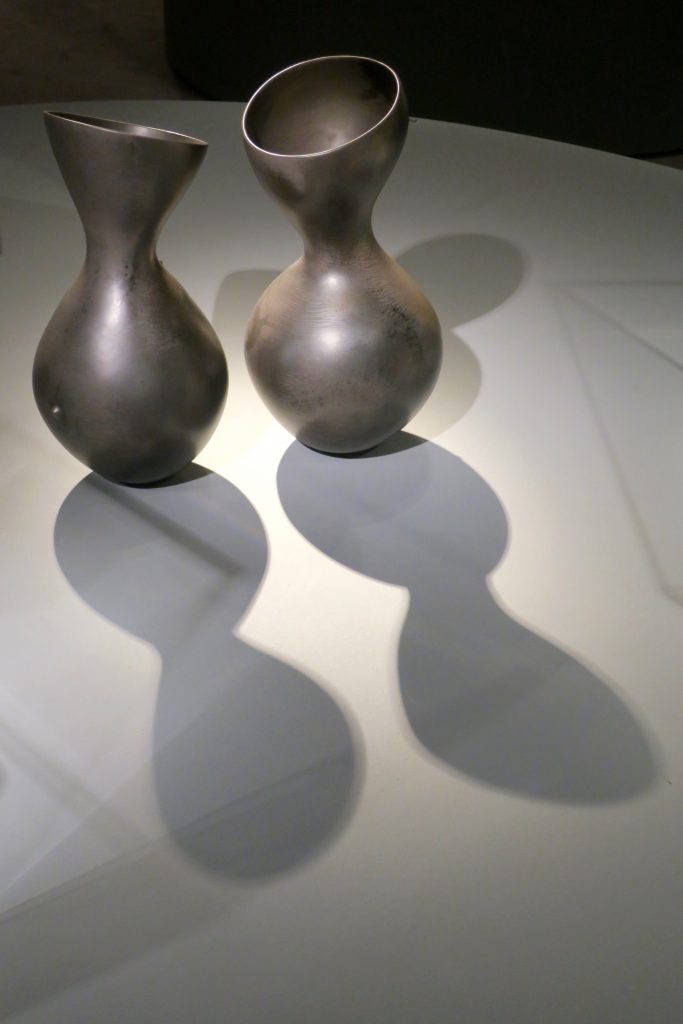
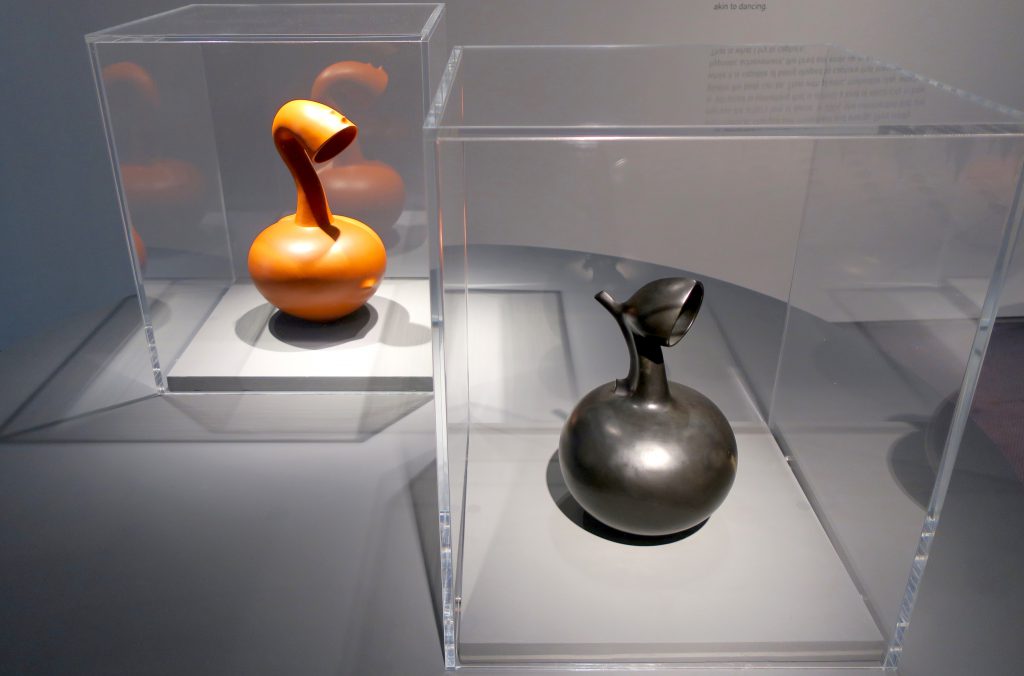
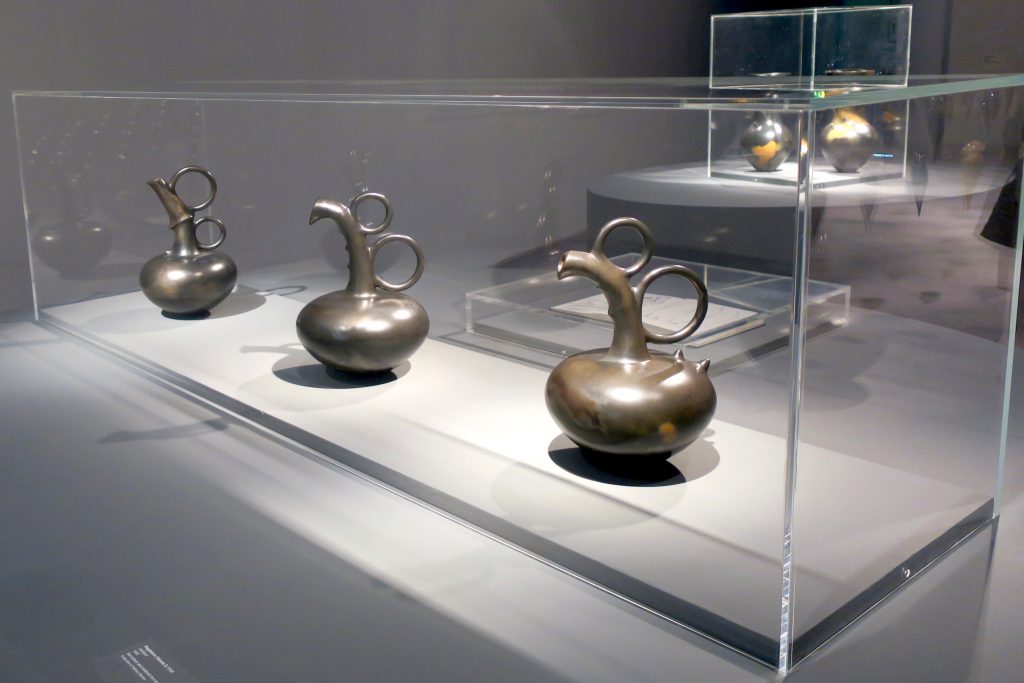
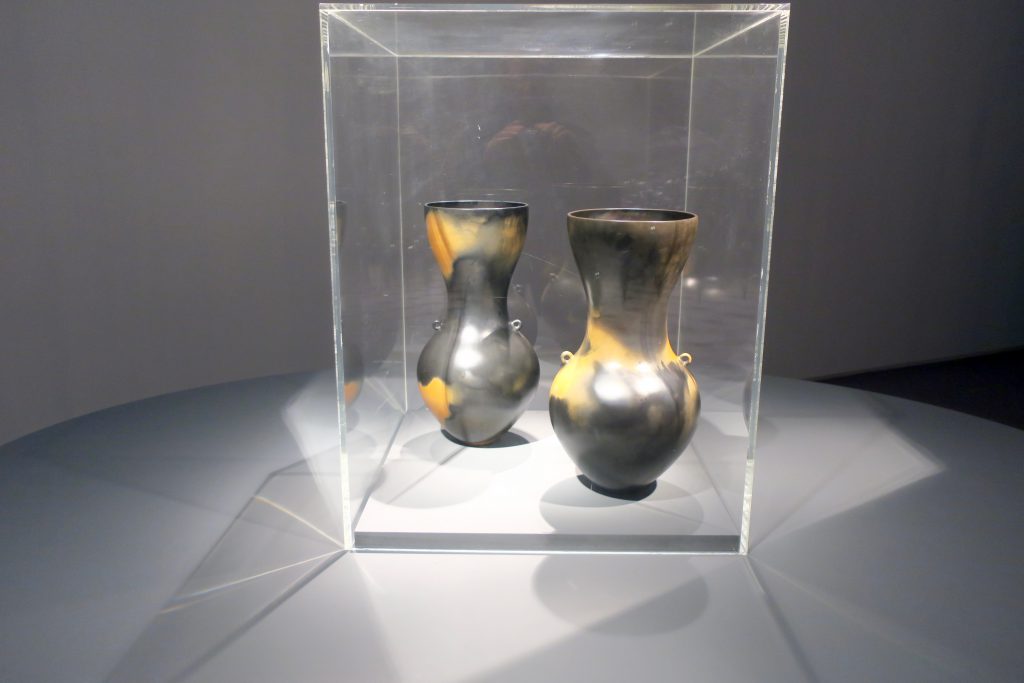
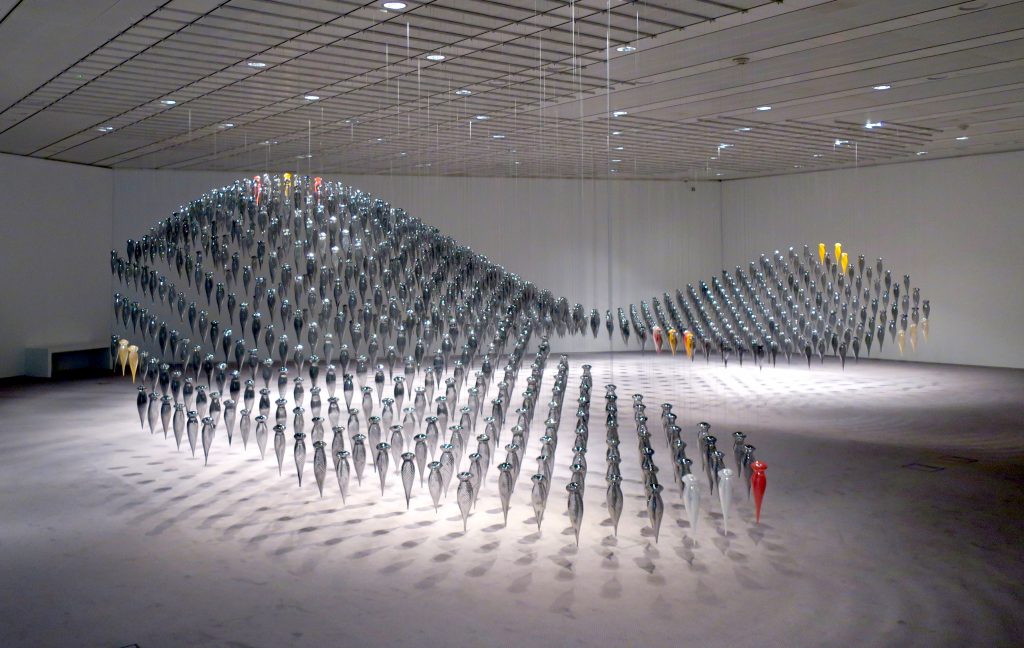
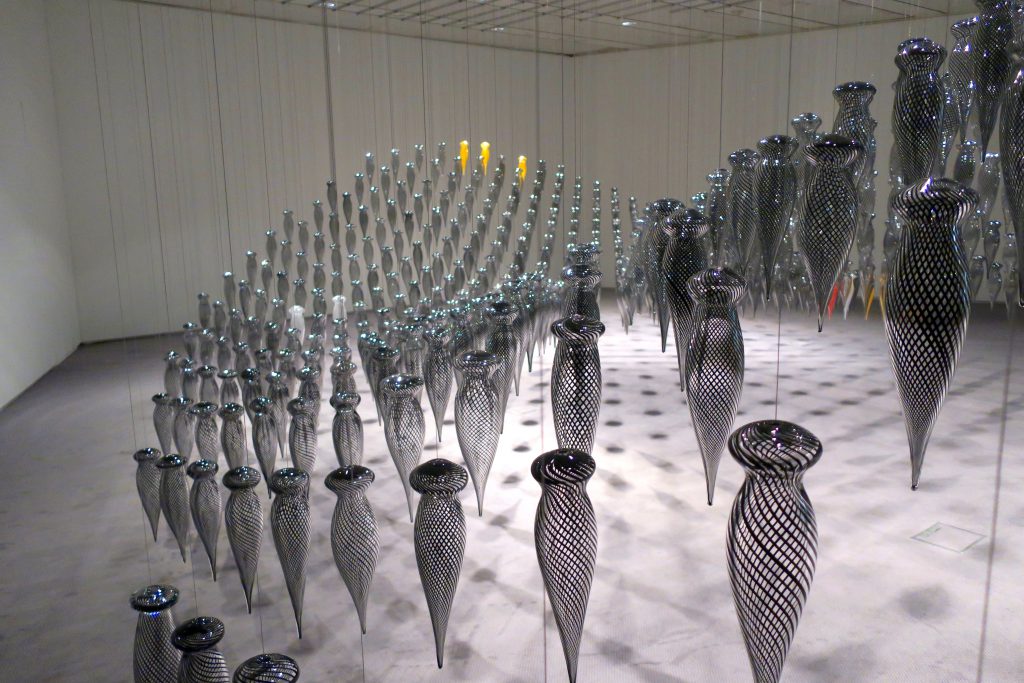
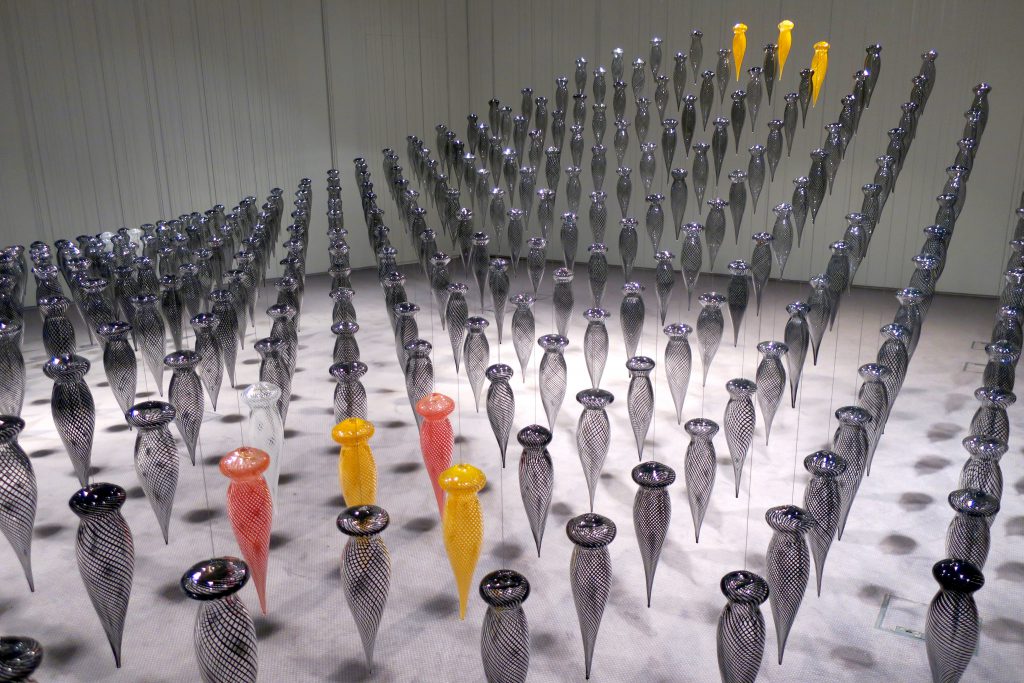
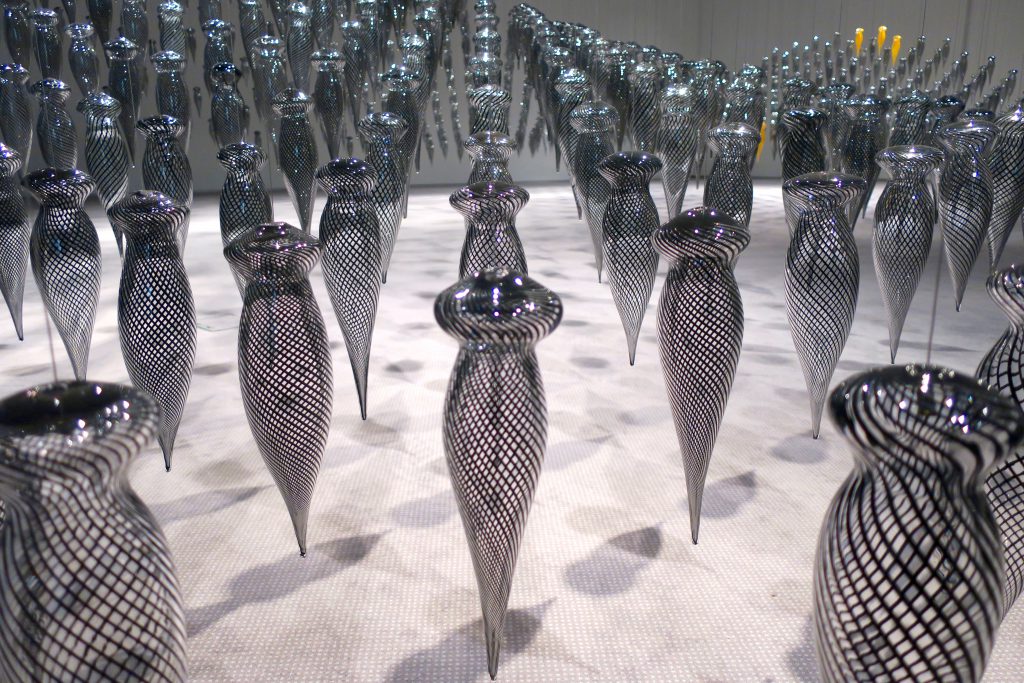
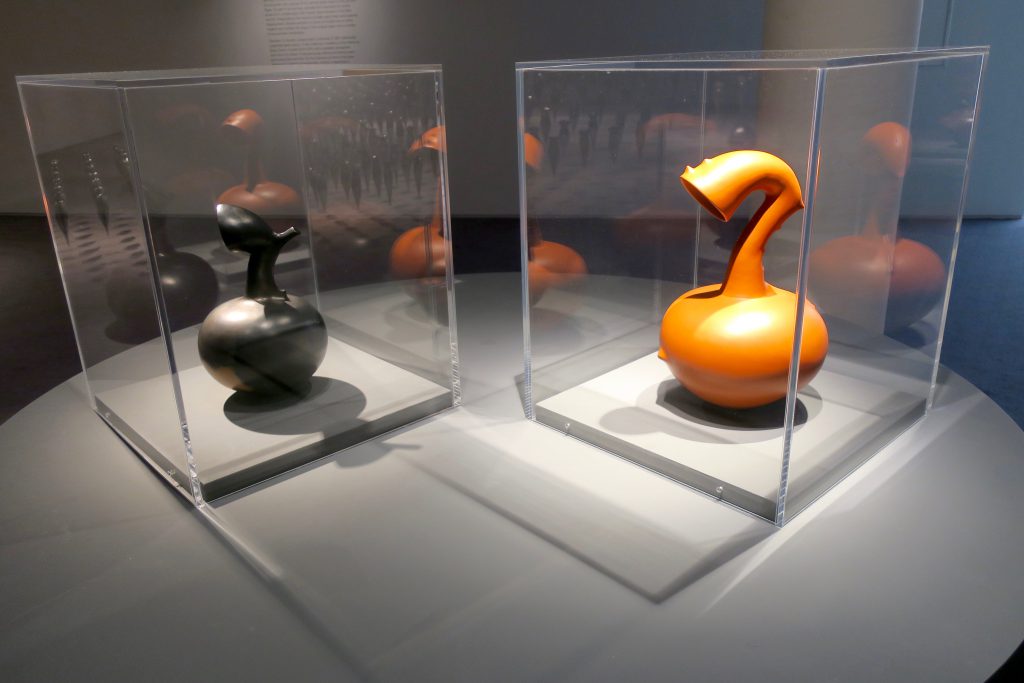
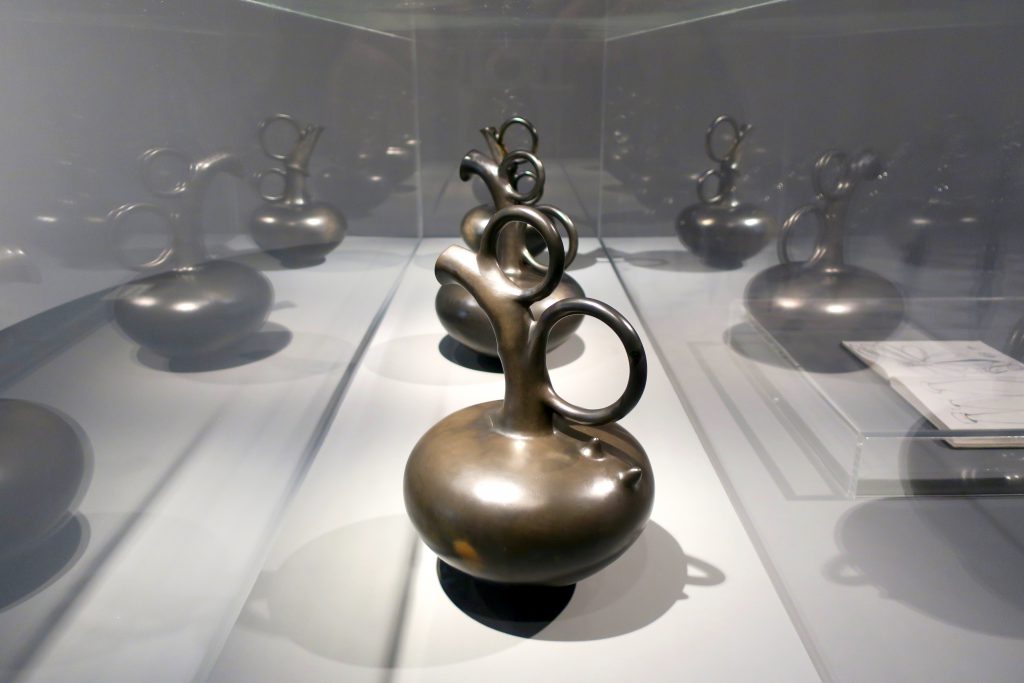
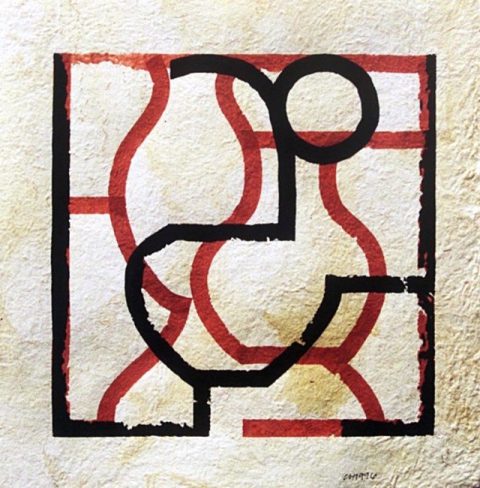
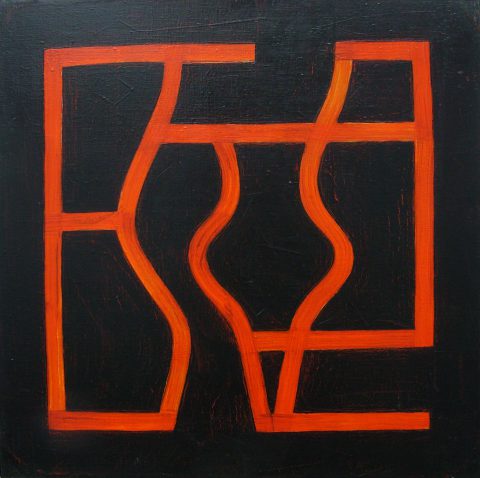
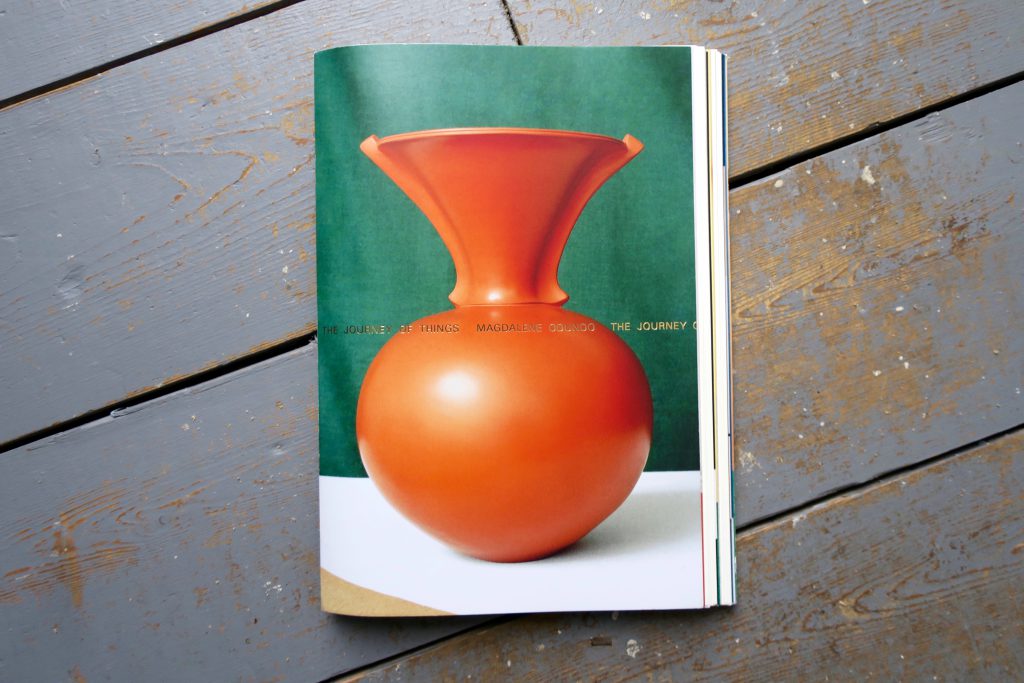
2 thoughts on “The Journey Of Things”